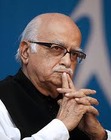L.K. Advani's Blog, page 11
March 17, 2013
AMAZING AUTHOR : THOUGHT PROVOKING BOOK
Last month I received a copy of Khushwantnama: The Lessons of my life. I completed the 188-page book by Khushwant Singh almost in a single sitting. And the first thing I felt like doing after reading the book was to ask my office to connect me to Khushwant Singh so that I could offer him my salutations for this wonderful book published by Penguin Viking.
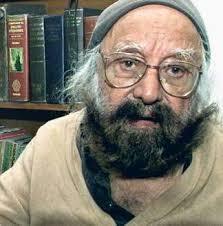 The person who picked up the phone at the other end told my office that Khushwant Singhji may not be able to come to the phone. A message was also conveyed that if Advani wanted to meet Khushwant ji, he was welcome to see him that evening. I immediately responded that I had another engagement that evening, but I would certainly call on him the next day.
The person who picked up the phone at the other end told my office that Khushwant Singhji may not be able to come to the phone. A message was also conveyed that if Advani wanted to meet Khushwant ji, he was welcome to see him that evening. I immediately responded that I had another engagement that evening, but I would certainly call on him the next day.
Khushwant Singh was born on February 2, 1915. So when I received this book in February, 2013, I knew that he had completed 98 years of his life and had entered his 99th year !
I have not read any other author who could write so well, and with such lucidity, at such an advanced age. It is therefore, that in the caption to this blog I have not only lauded the book, but also the writer.
***
The book opens with this verse from Shakespeare:
This above all, to thine own self be true, And it must follow, as the night the day, Thou canst not then be false to any man.
Hamlet Act I, Scene III
I must say that this book is eloquent testimony to the fact that Khushwant Singh spares absolutely no effort to be true to himself. He writes with extraordinary candour even while writing about his own self. Sample these first two paragraphs of his Introduction:
I am now in what, according to traditional Hindu belief, is the fourth and final stage of life, sanyaas. I should be meditating in solitude, I should have shed all attachments and all interest in worldly things. According to Guru Nanak, a person who lives into his nineties feels weak, does not understand the reason for his weakness and keeps lying down. I have not reached either of those stages of my life just yet.
At ninety-eight, I count myself lucky that I still enjoy my single malt whiskey at seven every evening. I relish tasty food, and look forward to hearing the latest gossip and scandal. I tell people who drop in to see me, if you have nothing nice to say about anyone, come and sit beside me. I retain my curiosity about the world around me; I enjoy the company of beautiful women; I take joy in poetry and literature, and in watching nature.
Apart from the Introduction, the book contains sixteen chapters. As a former journalist, I particularly liked three of these, namely :
(i) The Business of writing
(ii) What it takes to be a writer
(iii) Journalism Then and Now
***
In a chapter titled “Dealing with Death”, the author writes :
I actually believe in the Jain philosophy that death ought to be celebrated. I had even written my own obituary in 1943 when I was in my twenties. It later appeared in a collection of short stories, titled Posthumous. In the piece I imagined the Tribune announcing news of my death on its front page with a small photograph. The headline would read: ‘Sardar Khushwant Singh Dead’. And then in somewhat smaller print: ‘We regret to announce the sudden death of Sardar Khushwant Singh at 6 p.m. last evening. He leaves behind a young widow, two infant children and a large number of friends and admirers… Amongst those who called at the late sardar’s residence were the PA to the chief justice, several ministers, and judges of the High Court.’
The last but one chapter of this book is the one captioned: “Twelve tips to live long and be happy.” My daughter Pratibha said to me: “Without even reading this book you seem to be following most of the tips given by Khushwant Singh. Two of the most invaluable tips held out by the book are : Don’t lose your temper, and don’t tell a lie! And you follow both these almost intuitively.”
The last chapter of the book is Epitaph. It runs as follows:
How would I like to be remembered when I am gone? I would like to be remembered as someone who made people smile. A few years ago, I wrote my own epitaph:
Here lies one who spared neither man nor God
Waste not your tears on him, he was a sod
Writing nasty things he regarded as great fun
Thank the Lord he is dead, this son of a gun.
-Khushwant Singh
***
On Sunday March 3, 2013 I called on Sardar Khushwant Singh at his residence at Sujan Singh Park, New Delhi (named after Khushwant Singh’s grandfather). I heartily complimented him on the book he had written, and offered my pranams to him. I had a cup of tea and spent a very pleasant hour at the place. I also met his daughter Mala who lives in the adjoining flat, and takes great care of him.
TAIL PIECE
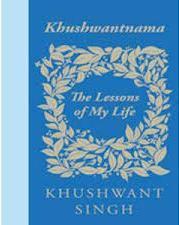 President Zail Singh was operated on in the same Texan hospital as his predecessor, Sanjiva Reddy. When taken to the operating theatre, the chief surgeon asked the President: ‘Are you ready?’
President Zail Singh was operated on in the same Texan hospital as his predecessor, Sanjiva Reddy. When taken to the operating theatre, the chief surgeon asked the President: ‘Are you ready?’
‘No, I am not,’ he replied. ‘I am Zail Singh.’
Chapter in the book,
“Humour is a lethal weapon”.
L.K. ADVANI
New Delhi
18 March, 2013

January 25, 2013
कुम्भ मेला : अन्यत्र दुर्लभ एक नजारा
चालीस वर्षों से अधिक समय से मैं संसद में हूं। एक समय था जब मिलने आने वाले लोग कोई न कोई काम कराने के लिए आते थे। उनमें से अधिकांश ऐसे थे जो टेलीफोन कनेक्शन चाहते थे। उनमें से अधिकतर का कहना रहता था कि उनका नाम प्रतीक्षा सूची में वर्षों से दर्ज है, फिर भी निकट भविष्य में उन्हें टेलीफोन कनेक्शन मिलने की संभावना नहीं दिखती।
मोबाइल फोन के आने के बाद स्थिति आमूलचूल बदल चुकी है। आज शायद ही कोई इस काम के लिए आता होगा। भारत में मोबाइल फोन उपभोक्ताओं की संख्या विश्व के किसी भी हिस्से की तुलना में तीव्रता से बढ़ रही है। ऐसा अनुमान प्रकट किया गया था कि सन् 2010 तक देश में मोबाइल फोन उपभोक्ताओं की संख्या 60 करोड़ से ज्यादा थी और इसके अलावा 15 मिलियन नए उपभोक्ताओं की संख्या हर महीने इसमें जुड़ती जा रही है। इंटरनेट उपयोग करने वालों की संख्या में भी भारी वृध्दि हुई है। सन् 1998 में यह संख्या 1.4 मिलियन थी। आज यह 75 मिलियन से भी ज्यादा है। हार्वर्ड की विद्वान डायना एल एक्क की पुस्तक ‘सेक्रिड जियोग्राफी‘, जिसे पिछले पखवाड़े मैंने उध्दृत किया था, ने भारत को ”कैपिटेल ऑफ दि टेक्नालॉजी रिवोल्यूशन” (प्रौद्योगिकी क्रांति की राजधानी) के रूप में वर्णित किया है।
डायना एक्क की पुस्तक के अंतिम अध्याय का शीर्षक ”ए पिलग्रिम्स इण्डिया टूडे” (एक तीर्थयात्री का वर्तमान भारत) है। इसमें वह लिखती हैं:
इससे हमें आश्चर्यचकित नहीं होना चाहिए कि यातायात और संचार क्षेत्र में क्रांति ने तीर्थयात्रियों की संख्या को बढ़ावा दिया है। आधुनिक प्रौद्योगिकी के प्रवाह के चलते कम होना दूर उल्टे तीर्थयात्रा ने नई उर्जा ग्रहण की है। इंटरनेट, तिरूपति या वैष्णोदेवी की वेबसाइट के माध्यम से कोई पूजा और विशेष दर्शनों हेतु बुकिंग कर सकता है तथा धर्मशाला में अपना आरक्षण भी करा सकता हैं। यदि कोई किसी कारण से यात्रा पर नहीं जा पाए, तो भी वह तिरूपति मंदिर से प्रात: सुप्रभातम् सुन सकता है और ऑनलाइन दर्शन तथा दान हेतु भी सम्पर्क उपलब्ध है। तीर्थयात्री इंटरनेट के माध्यम से हिमालय स्थित चारधाम यात्रा या अनगिनत अन्य तीर्थस्थलों, पहाड़ों पर स्थित बदरीनाथ से लेकर दक्षिण में तमिलनाडू के रामेश्वरम तक के बारे में अच्छा पैकेज पा सकते हैं।”
इस अध्याय में वैष्णो देवी (जम्मू एवं कश्मीर) जाने वाले यात्रियों की संख्या में हुई बढ़ोत्तरी को भी दर्ज किया गया है। डायना कहती हैं कि 1986 में वैष्णो देवी जाने वाले यात्रियों की संख्या 14 लाख थी जबकि सन् 2009 में यह 82 लाख से ऊपर हो गई। गत् तीन वर्षों में, वार्षिक संख्या निश्चित रूप से एक करोड़ पार कर गई होगी!
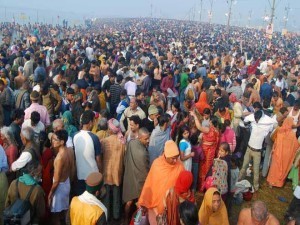 गत् सप्ताह प्रयाग, जहां गंगा, यमुना और विलुप्त सरस्वती नदियों की त्रिवेणी है, पर दुनियाभर में सबसे बड़े धार्मिक उत्सव कुम्भ की शुरूआत हुई। प्रयाग ही एकमात्र स्थल नहीं है जहां यह विशाल कुंभ मेला लगता हो। कुम्भ का शाब्दिक अर्थ है कलश, और पवित्र कुम्भ मेले का आशय है अमृत से भरे कलश से। यह मेला तीन अन्य स्थानों पर विभिन्न समयों पर आयोजित होता है- हरिद्वार, उज्जैन और नाशिक।
गत् सप्ताह प्रयाग, जहां गंगा, यमुना और विलुप्त सरस्वती नदियों की त्रिवेणी है, पर दुनियाभर में सबसे बड़े धार्मिक उत्सव कुम्भ की शुरूआत हुई। प्रयाग ही एकमात्र स्थल नहीं है जहां यह विशाल कुंभ मेला लगता हो। कुम्भ का शाब्दिक अर्थ है कलश, और पवित्र कुम्भ मेले का आशय है अमृत से भरे कलश से। यह मेला तीन अन्य स्थानों पर विभिन्न समयों पर आयोजित होता है- हरिद्वार, उज्जैन और नाशिक।
बारह वर्ष पूर्व मैं प्रयागराज कुम्भ गया था। पिछली बार मैं हरिद्वार के कुम्भ मेले में गया था। यह सन् 2010 की बात है जब भाजपा के डा0 रमेश पोखरियाल ‘निशंक‘ मुख्यमंत्री थे। इस मेले में, परमपूज्य दलाई लामा अधिकांश कार्यक्रमों में मेरे साथ थे।
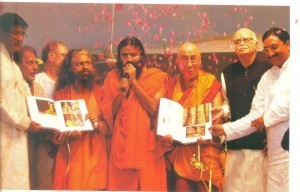
हरिद्वार जाने से पूर्व मैं स्वामी चिदानंदजी के परमार्थ निकेतन, जहां सामान्यतया मैं रूकता हूं, गया था, वहां मुझे मार्क टुली द्वारा कुम्भ मेलों पर लिखित एक उत्कृष्ट लेख पढ़ने को मिला। मार्क टुली अनेक वर्षों तक नई दिल्ली में बी.बी.सी. के ब्यूरो चीफ रहे हैं और आपातकाल के दौरान कांग्रेस सरकार ने उन्हें भारत से बाहर भेज दिया था क्योंकि उन्होंने आपातकाल का सशक्त विरोध किया था। यह उल्लेखनीय है कि सेवानिवृत्ति के बाद मार्क टुली भारत में ही बस गए हैं।
अपने लेख में मार्क टुली ने इस पर खेद प्रकट किया था कि जबकि मीडिया अक्सर कुम्भ के अवसर पर पवित्र गंगा में स्नान करने वाले लाखों की अनुमानित संख्या की बात तो करता है परन्तु वास्तविक संख्या के सही आकलन के लिए सेटेलाइट फोटोग्राफर्स, कम्प्यूटर्स और आधुनिक तकनीक के अन्य उपकरणों का सहारा नहीं लेता।
जब 2010 में, मैं कुम्भ हेतु गया तब मैंने हमारे मुख्यमंत्री डॉ0 पोखरियाल को यह करने के लिए कहा। श्री पोखरियाल ने केन्द्र सरकार के इसरो नेशनल रिमोट सैंसिंग सेन्टर और राज्य सरकार के उत्तराखण्ड स्पेस एप्लीकेशन सेंटर को मिलकर आने वाले तीर्थ यात्रियों की और अधिक विश्वसनीय आकलन संख्या देने को कहा।
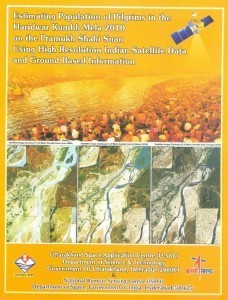
उपरोक्त वर्णित दोनों संगठनों ने हाई रिसोल्यूशन इंडियन सेटेलाइट द्वारा और ग्राऊण्ड बेस्ड इन्फोरमेशन का उपयोग करके कुम्भ के प्रमुख शाही स्नान दिवस (14 अप्रैल, 2010) पर स्नान करने वाले तीर्थयात्रियों की अनुमानित संख्या दी जोकि 1 करोड़ 63 लाख 77 हजार और 5 सौ थी! मैं आशा करता हूं कि ये संगठन प्रयागराज के कुम्भ मेले में इस वर्ष भाग लेने वाले लोगों की संख्या का स्वयं ही आकलन करेंगे।
कुम्भ पर मार्क टुली का लेख उनकी पुस्तक ”नो फुल स्टाप््स इन इण्डिया” में से लिया गया था जो कहता है:
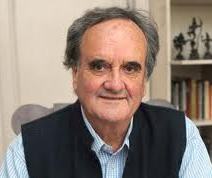 ”दुनिया में कोई अन्य देश कुंभ मेले जैसा दृश्य नहीं प्रस्तुत कर सकता। यह सर्वाधिक बदनाम भारतीय प्रशासकों की विजय है लेकिन उससे ज्यादा यह भारत के लोगों की विजय है। और अंग्रेजी प्रेस इस विजय पर कैसे प्रतिक्रिया व्यक्त करती है? अपरिहार्य रूप से, तिरस्कार के साथ। देश के सर्वाधिक प्रभावशाली दैनिक द टाइम्स ऑफ इण्डिया ने एक लम्बा लेख प्रकाशित किया जिसमें ये वाक्य कई बार दोहराए गए थे ‘अबस्क्युअरिज्म रूल्ड दि रूट्स इन कुम्भ’ (कुम्भ में रूढ़िवाद ने बसेरा डाला), ‘रिलीजियस डॉगमा ओवरब्हेल्म्ड रीज़न एट दी कुम्भ ¼कुंभ में धार्मिक कर्मकाण्ड ने तर्क को पीछे धकेलk ½ और ‘दि कुंभ आफ्टर ऑल रिमेन्ड ए मेअर स्पेक्टेकल विद इट्स मिलियन ह्यूज बट लिटिल सबस्टेन्स’¼कुंभ में लाखों की भीड़ उमड़ी मगर ठोस कुछ नहीं निकला½।”
”दुनिया में कोई अन्य देश कुंभ मेले जैसा दृश्य नहीं प्रस्तुत कर सकता। यह सर्वाधिक बदनाम भारतीय प्रशासकों की विजय है लेकिन उससे ज्यादा यह भारत के लोगों की विजय है। और अंग्रेजी प्रेस इस विजय पर कैसे प्रतिक्रिया व्यक्त करती है? अपरिहार्य रूप से, तिरस्कार के साथ। देश के सर्वाधिक प्रभावशाली दैनिक द टाइम्स ऑफ इण्डिया ने एक लम्बा लेख प्रकाशित किया जिसमें ये वाक्य कई बार दोहराए गए थे ‘अबस्क्युअरिज्म रूल्ड दि रूट्स इन कुम्भ’ (कुम्भ में रूढ़िवाद ने बसेरा डाला), ‘रिलीजियस डॉगमा ओवरब्हेल्म्ड रीज़न एट दी कुम्भ ¼कुंभ में धार्मिक कर्मकाण्ड ने तर्क को पीछे धकेलk ½ और ‘दि कुंभ आफ्टर ऑल रिमेन्ड ए मेअर स्पेक्टेकल विद इट्स मिलियन ह्यूज बट लिटिल सबस्टेन्स’¼कुंभ में लाखों की भीड़ उमड़ी मगर ठोस कुछ नहीं निकला½।”
जब टुली इलाहाबाद जोकि प्रयाग के नाम से भी प्रसिध्द है, गए तो वह एक पूर्व सांसद संत बख्शसिंह के यहां ठहरे। वह एक अन्य कांग्रेसजन श्री वी.पी. सिंह जो प्रधानमंत्री राजीव गांधी के विरूध्द विद्रोह कर बाद में प्रधानमंत्री (1989-90) बने, के भाई थे। धर्म और सेकुलरिज्म के बारे में संत बख्शसिंह से बातचीत करते हुए मार्क टुली ने कहा कि जब इतने लाख लोग कुम्भ मेले में आते हैं, तो क्या कुछ बुध्दिजीवियों की इस आशंका की पुष्टि नहीं होती कि ऐसे धार्मिक मेले हिन्दू कट्टरपन की तरफ ले जाएंगे?
संत बख्शसिंह द्वारा इसका दिया गया जवाब न केवल दिलचस्प है अपितु शिक्षाप्रद भी है। मार्क टुली की पुस्तक से मैं यहां उध्दृत कर रहा हूं।
”देखो, तुम अच्छी तरह से जानते हो कि यहां स्नान करने वालों में से अधिकांश जाने के बाद कांग्रेस या मेरे भाई के जनता दल जैसे सेकुलर दलों को वोट करेंगे, तो सेकुलरिज्म को खतरे का सवाल कहां उठता है? वास्तव में, सेकुलरिज्म को लेकर बहस एक पश्चिमी बहस है, क्योंकि आपके देशों में धर्म तर्कों और विज्ञान को प्रतिबंधित करता है। हमारे यहां बहस कभी भी धर्म बनाम अधर्म नहीं रही - यह तो आपके यहां से आई है।”
इस वार्तालाप को उदृत करते हुए मार्क टुली ने ”आक्रमक सेकुलरिज्म” की तीखी आलोचना की और इसे ”एक ऐसा व्यर्थ वर्ग जो धार्मिक लोगों के प्रति बड़ा अपराध करता है” निरूपित किया।
लालकृष्ण आडवाणी
25 जनवरी, 2012
नई दिल्ली

January 24, 2013
KUMBHA MELA : A SPECTACLE LIKE NO OTHER
I have been in Parliament for over forty years now. There was a time when the people who came to me with some or other request, the largest number used to be those wanting a telephone connection. Most of them would say that they have been on the waiting list of applicants for a connection for years, and yet the possibility of getting a phone connection is nowhere in sight.
With the arrival of cell phones, things have radically changed. Today hardly any one comes with this demand. Mobile Phone use in India is growing faster than anywhere else in the world. By 2010, it was estimated that there were in the country more than 60 crore cell phone subscribers and 15 million new subscribers are being added to this number every month. There is an explosion in the number of Internet users also. In 1998, this number was 1.4 million. Today it is more than 75 millions. Harvard Professor Diana Eck whose book on India titled Sacred Geography, I quoted a fortnight back has described India as the “Capital of the technology revolution”.
The last chapter of Diana Eck’s book is titled “A Pilgrim’s India today”. In this she writes:
“It should not surprise us that the revolutions in transportation and communications have stimulated an even greater flow of pilgrimage traffic. Far from fading with the onrush of modern technology, pilgrimage has gained new energies. The Internet provides access to websites for Tirupati or Vaishno Devi, where one can make a booking for pujas and special darshans and make a reservation in a dharmashala. If one is simply unable to make the trip, one can listen to the chanting of the morning suprabhatam in the Tirupati temple and there are connections for online darshan and donation. Pilgrims can browse the Internet for the best deals on the char dham yatra in the Himalayas or pilgrimage packages to seemingly countless destinations, from Badrinath in the mountains to Rameshvaram in the far south of Tamil Nadu”.
Yet another example this chapter has given is about how the volume of pilgrims has been growing in Vaishno Devi (in J&K). Diana says that in 1986 visitors to Vaishno Devi were 14 lakhs, while in 2009 it was over 82 lakhs. In the last three years, the annual number must have surely crossed one crore !
 Last week at Prayag, at the triveni confluence of Ganga, Yamuna and the mythical Saraswati, the Kumbha Mela, the largest religious festival in the world, commenced. Prayag is not the only place where this gigantic Kumbh Mela is held. Kumbha literally means an urn, and in case of the sacred Kumbh Mela, an urn containing amrita (nectar). The Mela is held at three other places also though at different points of time – at Haridwar, Ujjain and Nasik.
Last week at Prayag, at the triveni confluence of Ganga, Yamuna and the mythical Saraswati, the Kumbha Mela, the largest religious festival in the world, commenced. Prayag is not the only place where this gigantic Kumbh Mela is held. Kumbha literally means an urn, and in case of the sacred Kumbh Mela, an urn containing amrita (nectar). The Mela is held at three other places also though at different points of time – at Haridwar, Ujjain and Nasik.
I had been to the Prayagraj Kumbha twelve years back. More recently, I had been to the Kumbh Mela in Haridwar. That was in 2010, when BJP’s Dr. Ramesh Pokhriyal ‘Nishank’ was Chief Minister. At this Mela, His Holiness the Dalai Lama was also with me at most of the functions.

Shortly before visiting Haridwar where I ordinarily stay at the Parmarth Niketan headed by Swami Chidanand ji, I had read an excellent write up on the Kumbh Melas by Mark Tully, who for many years had been BBC’s Chief of Bureau in New Delhi and who was externed from India by the Congress Government during the Emergency because he was strongly opposed to the Emergency. It is significant that after retirement Mark Tully has settled down in India.
In this write-up, Mark Tully had regretted that while media estimates often spoke about the number of millions who took bath in the Holy Ganga at the Kumbh, never have satellite photographs, computers and the other paraphernalia of modern technology been used to make a reasonably accurate estimate of the actual numbers.
So, when I visited the Kumbh in 2010, I asked our C.M. Dr. Pokhriyal to do this. Pokhariyal asked the ISRO National Remote Sensing Centre of the Union Government, and the Uttarakhand Space Application Centre of the State Government, to make a more dependable assessment of the number of pilgrims who had come.

The above mentioned two organizations using high resolution Indian Satellite Data and Ground Based Information made an estimate of the number of pilgrims who took bath on the Pramukh Shahi Snan Day (April 14, 2010) of the Kumbh Mela, and gave the estimated figure as 1 crore, 63 lakhs, 77 thousands and 5 hundred ! I hope these space organizations, on their own also, make an assessment about this year’s Kumbha Mela at Prayagraj.
Mark Tully’s piece on the Kumbh, taken from his book No Full Stops in India, says
 “No other country in the world could provide a spectacle like the Kumbh Mela. It was a triumph for the much maligned Indian administrators, but it was a greater triumph for the people of India. And how did the English-language press react to this triumph? Inevitably, with scorn. The Times of India, the country’s most influential paper, published a long article replete with phrases like ‘Obscurantism ruled the roost in Kumbh’, ‘Religious dogma overwhelmed reason at the Kumbh’, and ‘The Kumbh after all remained a mere spectacle with its million hues but little substance.’
“No other country in the world could provide a spectacle like the Kumbh Mela. It was a triumph for the much maligned Indian administrators, but it was a greater triumph for the people of India. And how did the English-language press react to this triumph? Inevitably, with scorn. The Times of India, the country’s most influential paper, published a long article replete with phrases like ‘Obscurantism ruled the roost in Kumbh’, ‘Religious dogma overwhelmed reason at the Kumbh’, and ‘The Kumbh after all remained a mere spectacle with its million hues but little substance.’
When Tully went to Allahabad, that is Prayag, he stayed with Sant Bax Singh, an ex-M.P. and brother of Shri V.P. Singh, a Congressman who later revolted against Prime Minister Rajiv Gandhi and became P.M. in 1989-90. Talking to Sant Bax Singh about religion and secularism, Mark Tully expressed the feeling that when so many millions attend the Kumbh Melas, is not fear of the elite justified that such religious congregations may lead to Hindu fundamentalism ?
The reply given to this question is not only interesting, but educating as well. Let me quote Sant Bax Singh’s response to the fear expressed by Mark Tully:
“Look, you know perfectly well that the vast majority of those who have bathed at the Sangam will go away and vote for secular parties like the Congress or my brother’s Janata Dal, so where is the question of a threat to secularism? Actually, this debate about secularism is a Western debate, because in your part of the world, religion blocked reason and science. Debates here have never been religion versus non-religion – that has been brought here by you.”
After quoting this conversation, Mark Tully sharply criticizes “aggressive secularism”, and calls it “a barren creed which can cause great offence to religious people.”
L.K. ADVANI
New Delhi
25 January, 2013

January 12, 2013
नेहरु का सेकुलरिज्म भी हिन्दू मूल सिध्दांतों पर आधारित है
इन दिनों मुझे हार्वर्ड की विद्वान डायना एल एक्क की एक उत्कृष्ट पुस्तक पढ़ने को मिली। पुस्तक का शीर्षक है: ‘इण्डिया: ए सेक्रिड जियोग्राफी‘।
कुछ इतिहासकार कहते हैं कि भारतीयों में इतिहास बोध की कमी है। पुस्तक के अध्याय 2 में ”व्हाट इज इण्डिया?” शीर्षक वाले अध्याय में लेखक, अनेकानेक शोधों पर आधारित पुस्तक में इस टिप्पणी का संदर्भ देते हैं लेकिन यह भी स्वीकारोक्ति करते हैं कि यद्यपि ”यह पाकर अनूठा लगा कि उनके (भारतीयों) पास भूगोल का विस्तृत ज्ञान है।” डायना आगे लिखती हैं:
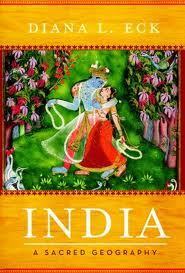 ”उस समय जब इस भूमि की लम्बाई और चौड़ाई में घूमना अवश्य रुप से बहुत कठिन रहा होगा,, तब भी भौगोलिक ज्ञान की परम्पराएं दर्शाती हैं कि ऐसी यात्रा वस्तुत की जाती थीं। और यह भी उल्लेखनीय है कि उस समय जब इस उपमहाद्वीप में कोई राजनीतिक एकता नहीं थी तब भी जो इस क्षेत्र को सिकन्दर के साथ जोड़ते थे और इसे एक एकल भूमि….निरुपित करते थे….
”उस समय जब इस भूमि की लम्बाई और चौड़ाई में घूमना अवश्य रुप से बहुत कठिन रहा होगा,, तब भी भौगोलिक ज्ञान की परम्पराएं दर्शाती हैं कि ऐसी यात्रा वस्तुत की जाती थीं। और यह भी उल्लेखनीय है कि उस समय जब इस उपमहाद्वीप में कोई राजनीतिक एकता नहीं थी तब भी जो इस क्षेत्र को सिकन्दर के साथ जोड़ते थे और इसे एक एकल भूमि….निरुपित करते थे….
वे भी सत्यापित करते हैं कि पश्चिमी सीमा पर सिंधु नदी, हिमाचल और उत्तर तक फैला हिन्दूकुश, और अन्य दोनों दिशाओं में विस्तारित समुद्र के साथ भारत आकार में चर्तुर्भुजीय था। यहां तक कि उन्होंने इस माप को भी उदृत किया है: सिंधु नदी की लम्बाई; सिंधु से पाटलिपुत्र की दूरी और वहां से गंगा मुख; पूर्वी और पश्चिमी तटों से इसकी दूरी के साथ।
ब्रिटिश शासन के दौरान भारतीय पुरातत्व सर्वेक्षण के निदेशक बने एलेक्झेडर कन्नींघम ने 1871 में लिखा:
”इन आयामों का सुगठित प्रबन्धन जोकि सिकन्दर के गुप्तचरों ने दिया था, विशेषकर देश के वास्तविक आकार के साथ अपने आप में उल्लेखनीय है, यहां तक कि उनके इतिहास के प्रारम्भिक काल में उन्हें अपनी मातृभूमि के रुपों और विस्तार का सही-सही ज्ञान था।”
जब देश पर अंग्रेजों का शासन था तब तथाकथित विद्वानों का एक वर्ग इसे प्रोत्साहित करने का इच्छुक था कि ब्रिटिश शासन इस विचार के प्रति घृणा करता है कि भारत एक देश था और भारतीय एक जन थे।
इस वर्ग का एक प्रमुख प्रतिनिधि था ब्रिटिश सिविल अधिकारी, सर जॉन स्ट्राचे। सन् 1888 में कैंम्ब्रिज यूनिवर्सिटी में बोलते हुए सर स्ट्राचे ने कहा ”भारत नाम का क्या महत्व है? अनेक बार यह उत्तर दिया जाता रहा जोकि असत्य सा है,” मगर यह भी सत्य है, उन्होंने कहा ”ऐसा कोई देश नहीं है, और यह भारत के बारे में पहला तथा सर्वाधिक जरुरी तथ्य समझ लेना चाहिए। भारत एक नाम है जिसे हम ने अनेक विभिन्न देशों सहित एक बड़े क्षेत्र का नाम दिया है।”
सर जॉन स्ट्राचे तर्क देते थे कि भारत की तुलना में यूरोप में ज्यादा समान संस्कृति है। ”स्कॉटलैण्ड स्पेन की तरह ज्यादा है बनिस्पत बंगाल के पंजाब की तरह की तुलना में…. सभ्य यूरोप में ऐसा कोई देश नहीं है जहां लोग भिन्न हों जैसे कि बंगाली सिखों से भिन्न है, और बंगाल की भाषा लाहौर में उतनी ही अबोधगम्य है जितनी कि यह लंदन में होगी।”
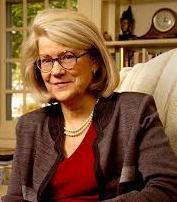 इस पुस्तक की लेखक डायना एक्क हार्वर्ड यूनिवर्सिटी में कम्पैरेटिव रिलीजन एण्ड इण्डियन स्टडीज की प्रोफेसर हैं। उनकी पुस्तक ‘बनारस, सिटी ऑफ लाइट‘ अपने विषय की उत्कृष्ट पुस्तक मानी जाती है, तो 559 पृष्ठों की कड़ी मेहनत से तैयार यह ग्रंथ बताता है कि कैसे हिन्दू पौराणिकता भारत के भूगोल से गुथी है और इस ब्रिटिश शासन के सिध्दांत कि भारत एक देश नहीं है और भारतीय एकजन नहीं हैं, को सशक्त और समाधानपूर्वक ठुकराती है।
इस पुस्तक की लेखक डायना एक्क हार्वर्ड यूनिवर्सिटी में कम्पैरेटिव रिलीजन एण्ड इण्डियन स्टडीज की प्रोफेसर हैं। उनकी पुस्तक ‘बनारस, सिटी ऑफ लाइट‘ अपने विषय की उत्कृष्ट पुस्तक मानी जाती है, तो 559 पृष्ठों की कड़ी मेहनत से तैयार यह ग्रंथ बताता है कि कैसे हिन्दू पौराणिकता भारत के भूगोल से गुथी है और इस ब्रिटिश शासन के सिध्दांत कि भारत एक देश नहीं है और भारतीय एकजन नहीं हैं, को सशक्त और समाधानपूर्वक ठुकराती है।
पुस्तक में अहमदनगर किले का स्मरण किया गया है जहां पण्डित नेहरु ने अपने कारावास के दौरान अपनी पुस्तक ‘डिस्कवरी ऑफ इण्डिया‘ लिखी थी। अपनी इस पुस्तक में वह लिखते हैं कि स्वतंत्रता संघर्ष के दौरान देश भर की उनकी यात्रा ने उन्हें देश की एकता के बारे में धारणा को पुष्ट किया। नेहरु लिखते हैं:
यद्यपि बाह्य रुप से हमारे लोगों के बीच विभिन्नता और बेहद विविधता थी, तब भी सर्वत्र ‘एकात्मता‘ का प्रबल भाव था जिसने भले ही हमारा राजनीतिक भाग्य हो या दुर्भाग्य रहा हो, युगों से हम सब को बांधे रखा है, भारत की एकता मेरे लिए मात्र एक बौध्दिक धारणा नहीं रही: यह एक भावनात्मक अनुभव था जिसने मुझे पूर्णतया हावी हुआ।”
डायना लिखती हैं: ”नेहरु के भारत के विज़न में निश्चित रुप से सभी जातियों और क्षेत्रीय समुदायों सहित इसकी मजहबी विविधता समाहित थी। सन् 1930 के दशक में भारतीय राष्ट्रीय कांग्रेस में अपने नेतृत्व के उदय से लेकर अपनी मृत्यु तक भारत के पहले प्रधानमंत्री के रुप में उन्होंने एक कट्टर सेकुलरिज्म का पक्ष लिया, यह सेकुलरिज्म गहरे, हिन्दू आधारों पर निर्मित था, जिनका वर्णन हम कर रहे हैं।”
भाजपा और राष्ट्रीय स्वंयसेवक संघ भारतीय राष्ट्रवाद का आधार हमारी संस्कृति को ही मानते हैं। अक्टूबर 1961 में जब मदुरै में अखिल भारतीय कांग्रेस कमेटी का सम्मेलन हुआ तब पण्डित नेहरु ने टिप्पणी की थी कि भारत ”युगों-युगों से तीर्थ-यात्राओं, तीर्थ स्थानों का देश रहा है। ”उन्होंने आगे लिखा ”समूचे देश में आपको प्राचीन स्थान मिलेंगे। हिमालय की बर्फ से ढकी चोटियों पर बदरीनाथ, केदारनाथ तथा अमरनाथ से दक्षिण में कन्याकुमारी तक आपको तीर्थस्थल मिल जाएंगे। दक्षिण से उत्तर तक तथा उत्तर से दक्षिण तक कौन सी प्रेरणा-शक्ति लोगों को इन महान तीर्थस्थलों की ओर आकर्षित करती आ रही है? यह एक राष्ट्र की भावना तथा एक संस्कृति की भावना है और इस भावना से हम परस्पर बंधे हुए हैं। हमारे प्राचीन ग्रंथों में कहा गया है कि भारत भूमि उत्तर में हिमालय से लेकर दक्षिण में समुद्र तक फैली है। सदियों से भारत की यह संकल्पना चली आ रही है तथा इसने हमें परस्पर बांध रखा है। इस महान धारणा से प्रभावित होकर लोगों ने इसे ‘पुण्यभूमि‘ माना है। जबकि हमारे यहां अनेक सम्राज्य हुए हैं तथा यहां हमारी विभिन्न भाषाएं प्रचलित रही हैं। यह कोमल बंधन ही हमें अनेक तरीकों से बांधे रखता है।
पण्डित नेहरु का मदुरै भाषण भारत की प्राचीनता परन्तु सतत् स्वउर्जित संस्कृति को उस ‘कोमल बंधन‘ वर्णित करता है जो हमारी विविधताओं को ‘एक देश‘ के रुप में जोड़ता है।
****
उमाश्री भारती की उनके ‘गंगा समग्र अभियान‘ के पहले चरण के सफलतापूर्वक सम्पन्न होने पर हार्दिक अभिनन्दन, जिसके तत्वाधान में गत् 7 जनवरी, 2013 को कांस्टीटयूशन क्लब में एक औपचारिक कार्यक्रम सम्पन्न हुआ।
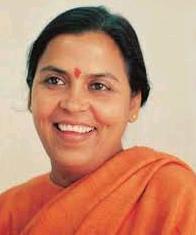 इस अभियान के दो हिस्से थे: एक, 20 सितम्बर, 2012 से 28 अक्टूबर, 2012 तक गंगासागर से गंगोत्री तक की पांच सप्ताह की यात्रा और दूसरा, 2 दिसम्बर, 2012 को गंगा के सभी किनारों पर एक मानव श्रृंखला बनाना।
इस अभियान के दो हिस्से थे: एक, 20 सितम्बर, 2012 से 28 अक्टूबर, 2012 तक गंगासागर से गंगोत्री तक की पांच सप्ताह की यात्रा और दूसरा, 2 दिसम्बर, 2012 को गंगा के सभी किनारों पर एक मानव श्रृंखला बनाना।
साध्वी उमा भारती के अभियान के दो उद्देश्य थे। (1) शुध्द गंगा, (2) अविरल गंगा।
श्रोताओं से खचाखच भरे इस कार्यक्रम में भारतीजी ने इस अभियान में समाज के सभी समुदायों और वर्गों के उत्साह भरे समर्थन का प्रभावी ब्यौरा प्रस्तुत किया।
विट्ठलभाई पटेल हाउस में सम्पन्न इस कार्यक्रम में, मेरी सुपुत्री प्रतिभा द्वारा तैयार की गई तीस मिनट की अत्यन्त दिलचस्प और शिाक्षाप्रद फिल्म ‘गंगा‘ दिखाई गई।
****
सेक्रिड जियोग्राफी पुस्तक में ”दि गंगा एण्ड दि रिवर्स ऑफ इण्डिया‘ शीर्षक से एक अलग अध्याय है।
इस अध्याय में डायना कहती हैं: हिन्दू भारत अपनी विविधताओं के बावजूद कुछ चीजों पर एक स्वर से बोलता है जैसाकि गंगा माता के बारे में। यह नदी हिन्दुओं, चाहे वे उपमहाद्वीप के किसी भी भाग को अपना घर कहते हों, या चाहे उनका अपना कोई सम्प्रदाय हो, के लिए विशाल सांस्कृतिक और धार्मिक महत्व रखती है। जैसाकि एक हिन्दी लेखक ने लिखा है, ”यहां तक कि कट्टर नास्तिक हिन्दू भी जब गंगा के तट पर पहली बार पहुंचेगें तो उसके मन में ऐसे भाव उमड़ेगे जो पहले कभी नहीं उमड़े थे; ”या, हम इसमें जोड़ सकते हैं, ‘जब गंगा उनके पास पहुंची।‘ विभिन्न क्षेत्रों और बहुविध हिन्दू परम्पराओं के लोगों में एकता भाव लाने के लिए गंगाजल का उपयोग पूर्णतया अनुकुल होना चाहिए। आखिरकार, यह प्रतीक है सिर्फ उपकार, सिर्फ भरे हुए जल कलश और कमल का।
उमाश्री के अभियान के स्वयंसेवक गंगाजल के कलशों को लेकर सभी सांसदों, विधायकों और हजारों जनप्रतिनिधियों को देने गए थे, स्वयं उमाजी राष्ट्रपति, सम्मानीय लोकसभाध्यक्ष और अनेक अन्य गणमान्य महत्वपूर्ण व्यक्तियों को गंगाजल देने गई।
इस गंगाजल भेंट कार्यक्रम में हिस्सा ले चुके सभी इस पर एकमत थे कि जिस श्रध्दा से यह कलश ग्रहण किए गए वह न केवल हिन्दुओं तक सीमित भी अपितु हिन्दुओं, मुस्लिमों, ईसाइयों, सिखों में भी देखने को मिली।
लालकृष्ण आडवाणी
नई दिल्ली
11 जनवरी, 2013

January 10, 2013
EVEN NEHRU’S SECULARISM WAS BASED ON HINDU FOUNDATIONS
An outstanding book I have run into these days is one by a renowned Harvard scholar Diana L Eck. The book is titled INDIA: A Sacred Geography.
Some historians say that Indians lack a sense of history. In chapter 2 of the book, captioned “What is India?” the author of this extremely well- researched book refers to such remarks, but goes on to affirm that it is however, “remarkable to discover that they (Indians) had a detailed sense of geography.” Diana adds:
 Even in a time when travel throughout the length and breadth of the land must have been very difficult, there were traditions of geographical knowledge to suggest that such travel was indeed undertaken. And it is remarkable that even in a time when the subcontinent had no political unity whatsoever, those who described this territory to Alexander’s company thought of it and described it as a single land…
Even in a time when travel throughout the length and breadth of the land must have been very difficult, there were traditions of geographical knowledge to suggest that such travel was indeed undertaken. And it is remarkable that even in a time when the subcontinent had no political unity whatsoever, those who described this territory to Alexander’s company thought of it and described it as a single land…
They also attested that India was roughly quadrilateral in shape, with the Indus River forming the western boundary, the Himalayas and the Hindu Kush stretched along the north, and the seas skirting the other two sides. They even cited its measurements: the length of the River Indus; the distance from the Indus to Pataliputra and from there to the mouth of the Ganges; the distances along the eastern and western coasts.
Alexander Cunningham, who under the British became Director of the Archaeological Survey of India, wrote in 1871:
‘The close agreement of these dimensions, given by Alexander’s informants, with the actual size of the country is very remarkable, and shows that the Indians, even at that early date in their history, had a very accurate knowledge of the form and extent of their native land.”
When the Britishers ruled our country one school of so called orientalists keen to promote the Empire were scornful of the idea that India was one country and that Indians were one people.
A prominent representative of this school was a British Civil servant, Sir John Strachey. Speaking at the University of Cambridge in 1888, Sir Strachey said “What does this name India signify? The answer that has more than once been given sounds paradoxical, but it is true,” he said. “There is no such country, and this is the first and most essential fact about India that can be learned. India is a name, which we give to a great region including a number of different countries.”
Sir John Strachey argued that Europe had more of common culture than India. “Scotland is more like Spain than Bengal is like the Punjab…There are no countries in civilized Europe in which people differ as much as the Bengali differs from the Sikh, and the language of Bengal is as unintelligible in Lahore as it would be in London.”
 Diana Eck, the author of this book is a professor of Comparative Religion and Indian Studies at Harvard University. While her book Banaras, City of Light is regarded a classic in the field, this 559-page tome painstakingly projecting how Hindu mythology, interwoven with India’s Geography is a powerful and convincing refutation of the imperial thesis that India is not one country, and that Indians are not one people.
Diana Eck, the author of this book is a professor of Comparative Religion and Indian Studies at Harvard University. While her book Banaras, City of Light is regarded a classic in the field, this 559-page tome painstakingly projecting how Hindu mythology, interwoven with India’s Geography is a powerful and convincing refutation of the imperial thesis that India is not one country, and that Indians are not one people.
This book recalls Pandit Nehru’s incarceration in the Ahmednagar Fort where he wrote his Discovery of India. It was in this book that he reflected how his travels across the country during the freedom struggle made him acutely alive to the impression of the country’s unity. Nehru wrote:
Though outwardly there was diversity and infinite variety among our people, everywhere there was that tremendous impress of ‘oneness’, which had held all of us together for ages past, whatever political fate or misfortune had befallen us. The unity of India was no longer merely an intellectual concept for me: it was an emotional experience which overpowered me.
Diana comments: “Nehru’s vision of India surely included all its caste and regional communities, as well as its religious diversity. Although he espoused an ardent secularism throughout his political life, from his rising leadership of the Indian National Congress in the 1930s to his death as the first prime minister of India in 1964, it was a secularism that was somehow built on the kinds of deep, presumptively Hindu foundations we are describing.”
The BJP and the RSS hold that the basis of Indian nationalism is our culture. When in October 1961, the AICC held its session at Madurai, Pandit Nehru remarked that India has “for ages past been a country of pilgrimages.” He added: “All over the country you find these ancient places, from Badrinath, Kedarnath and Amarnath, high up in the snowy Himalayas down to Kanyakumari in the south. What has drawn our people from the south to the north and from the north to the south in these great pilgrimages. It is the feeling of one country and one culture and this feeling has bound us together. Our ancient books have said that the land of Bharat is the land stretching from the Himalayas in the north to the southern seas. This conception of Bharat as one great land which the people considered a holy land has come down the ages and has joined us together, even though we have had different political kingdoms and even though we may speak different languages. This silken bond keeps us together in many ways.”
Pandit Nehru’s Madurai speech clearly spelt out India’s ancient but constantly self-renewing culture as the ‘silken bond’ that unites our diversities into ‘one country’.
****
Hearty compliments to Umashree Bharati for the successful completion of the First Phase of her Ganga Samagra Abhiyan, to mark which a formal function was held at the Constitution Club on January 7, 2013.
 The Abhiyan had two main components: one, a five-week yatra lasting from 20 September, 2012 to 28 October, 2012, from Ganga Sagar to Gangotri and secondly, a Manav shrinkhala (a Human Chain) all along the banks of the Ganga on December 2, 2012.
The Abhiyan had two main components: one, a five-week yatra lasting from 20 September, 2012 to 28 October, 2012, from Ganga Sagar to Gangotri and secondly, a Manav shrinkhala (a Human Chain) all along the banks of the Ganga on December 2, 2012.
Sadhvi Uma Bharati’s campaign is aimed at two objectives. (i) Shuddh Ganga, (ii) Aviral Ganga.
At this well attended function Bharati ji gave the gathering an impressive account of the very enthusiastic response the Abhiyan had received from all communities and sections of society.
At the function held at the V.B.P. House, my daughter Pratibha’s 30 minute highly engrossing and educative film “Ganga” was screened.
****
In this book on Sacred Geography, there is a separate chapter on “The Ganga and the Rivers of India”.
In this chapter, Diana says : “There are few things on which Hindu India, diverse as it is, speaks with one voice as clearly as it does on Ganga Mata. The river carries an immense cultural and religious significance for Hindus, no matter what part of the subcontinent they call home, no matter what their sectarian leaning might be. As one Hindi author writes, “Even the most hardened atheist of a Hindu will find his heart full of feelings he has never before felt when for the first time he reaches the bank of the Ganga.” Or, we might add, when the Ganga reaches him. The use of Ganga water to evoke sentiments of unity among people of diverse regions and multiple Hindu traditions should be wholly benign. After all, this is a symbol that bears only beneficence, only the brimming water pot and the lotus.
Volunteers for Umashree’s campaign had gone to all MPs, MLAs and thousands of public representatives to present them with urns of gangajal. Umaji herself had gone to present gangajal to the Rashtrapati, the Hon’ble Speaker and several other distinguished VIPs.
All those who were part of this Gangajal presentation programme were, however, unanimous that the reverence which these urns commanded was not confined to Hindus but Hindus, Muslims, Christians. Sikhs etc. all alike.
L.K. Advani
New Delhi
January 11, 2013

January 5, 2013
श्री नारायण गुरु सम्बन्धी केरल की पहल का देश में भी अनुसरण हो
नव वर्ष की शुरुआत हो चुकी है। मुझे इसकी प्रसन्नता है कि दिसम्बर, 2012 के अंतिम दिन मैं केरल में था और एक महान योगी तथा सिध्द श्री नारायण गुरु-अस्पृश्यता और जातिवाद के विरुध्द जिनके अथक संघर्ष की महात्मा गांधी ने भी प्रशंसा की-की पुण्य स्मृति से जुड़े तीर्थस्थल शिवगिरी जाने का सौभाग्य मिला।
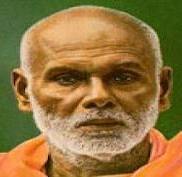 श्री नारायण गुरु का जन्म ऐसे समय पर हुआ जब अस्पृश्यता का अपने घृणित रुप में चलन था। ऐसी भी गलत धारणा प्रचलित थी कि कुछ लोगों की छाया भी अन्यों को अपवित्र कर देती थी। एक समान आराध्य और धर्म को मानने वाले लाखों श्रध्दालुओं में से कुछ को मंदिर में प्रवेश से वंचित कर दिया गया था।
श्री नारायण गुरु का जन्म ऐसे समय पर हुआ जब अस्पृश्यता का अपने घृणित रुप में चलन था। ऐसी भी गलत धारणा प्रचलित थी कि कुछ लोगों की छाया भी अन्यों को अपवित्र कर देती थी। एक समान आराध्य और धर्म को मानने वाले लाखों श्रध्दालुओं में से कुछ को मंदिर में प्रवेश से वंचित कर दिया गया था।
मुझे स्मरण आता है कि तिरुअनंतपुरम से लगभग 45 किलोमीटर दूर वरकला स्थित शिवगिरी मठ में मुझे 1987 में आमंत्रित किया गया था। सन् 1932 से प्रत्येक वर्ष होने वाले तीन दिवसीय समारोह में मुख्य अतिथि के रुप में मुझे बुलाया गया था। खराब मौसम के चलते तिरुअनंतपुरम जाने वाली विमान सेवा रद्द हो गई थी और मैं नहीं पहुंच सका। शिवगिरी, वरकला पहाड़ियों में स्थित है जहां गुरु (नारायण) के अनुयायी लाखों की संख्या में उनकी समाधि, और उनके द्वारा स्थापित शारदा (सरस्वती) मंदिर के दर्शन करने पहुंचते हैं।
शिवगिरी में सरस्वती की प्रतिमा स्थापित करने से पूर्व श्री नारायण गुरु ने अरुविप्पुरम में शिव मंदिर स्थापित किया। अत: अब 1987 में मैं वहां नहीं पहुंच सका तो किसी तरह अगले वर्ष मैं अरुविप्पुरम की यात्रा कर सका। इसलिए इस वर्ष अपने उद्धाटन भाषण की शुरुआत मैंने पीताम्बर वस्त्र धारण किए विशाल संख्या में उपस्थित श्रध्दालुओं से इस क्षमा याचना के साथ की कि मैं इस पवित्र स्थल पर 25 वर्ष बाद पहुंचा हूं।
इस तीन दिवसीय आयोजन की श्री नारायण गुरु ने योजना बनाई थी और 1928 में उनकी मृत्यु से पूर्व इसे घोषित किया गया। यह प्रत्येक वर्ष 30,31 दिसम्बर और 1 जनवरी को आयोजित किया जाता है। 30 दिसम्बर को इस आयोजन की औपचारिक शुरुआत राज्य के मुख्यमंत्री द्वारा की गई। दूसरे दिन के तीर्थदनम सम्मेलन, के इस वर्ष का उद्धाटन मुझे करने को कहा गया था। इसकी अध्यक्षता केंद्रीय मंत्री वायलर रवि ने की। अंतिम दिन अनेक प्रमुख विद्वानों ने श्री नारायण गुरु द्वारा प्रतिपादित आचार संहिता (Code of Ethics) के विभिन्न पहलुओं पर अपने विचार प्रस्तुत किए।
अपने भाषण में मैंने एक दिन पूर्व मुख्यमंत्री ओमन चाण्डी द्वारा की गई घोषणा कि 2013 से श्री नारायण गुरु की शिक्षाओं को केरल राज्य में स्कूली पाठयक्रम में जोड़ा जाएगा, का स्वागत किया।
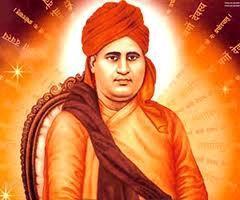
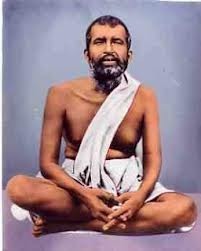
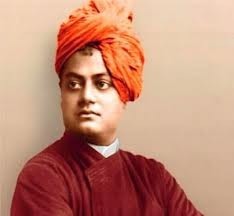
वस्तुत: यह दुर्भाग्यपूर्ण है कि भारतीय विद्यालयों में इतिहास की पढ़ाई अधिकांशतया राजाओं, उनके वंश, उनके युध्दों और शोषण पर ही केंद्रित रहती है। हमारे विध्दानों, साधु-संतो के अविस्मरणीय योगदान से सामान्यतया बच्चों को अक्सर इस आधार पर वंचित रखा जाता है कि एक सेकुलर देश में धर्म वर्जित कर्म है। यह एक बेहूदा दृष्टिकोण है। अत: शिवगिरी में अपने भाषण में मैंने केंद्रीय मंत्री वायलर रवि से अनुरोध किया कि केरल द्वारा की गई पहल को केंद्रीय और अन्य राज्यों में भी अपनाया जाए। यदि स्वामी दयानन्द सरस्वती, श्री रामकृष्ण परमहंस और स्वामी विवेकानन्द जैसे संतों की शिक्षाओं को पाठयक्रमों का सामान्य हिस्सा बना दिया जाए तो स्कूली पढ़ाई का स्तर बढ़ेगा।
प्रवासी भारतीय मंत्री श्री रवि ने कहा कि वे इस विषय को प्रधानमंत्री के ध्यान में लाएंगे।
उस दिन के अपने सम्बोधन में मैंने स्मरण किया कि स्कूल में पढ़ते समय हमें पता चला कि किसी विद्यार्थी की प्रतिभा के स्तर का आधार इस से आंका जाता था कि उसका ‘बौध्दिक स्तर‘ (इन्टेलिजेन्स क्वोशन्ट) कितना उपर या नीचे है। बाद में संयोग से एक पुस्तक ‘इ क्यू‘ यानी ‘भावात्मक स्तर‘ (इमोशनल क्वोशन्ट) पढ़ने पर मुझे लगा कि किसी के निजी व्यक्तित्व को परखने के लिए ‘बौध्दिक स्तर‘ (इन्टेलिजेंस क्वोशन्ट) महत्वपूर्ण होगा परन्तु उसका इ क्यू यानी ‘भावात्मक स्तर‘ पर भी ज्यादा महत्वपूर्ण है। ‘भावात्मक स्तर‘ से तात्पर्य यह है कि कैसे एक व्यक्ति क्रोध, द्वेष इत्यादि जैसे भावों को ग्रहण करता है। उस दिन मैंने कहा कि जो केरल ने किया है और जो मैंने देशभर के शैक्षणिक संस्थानों को करने के लिए अनुरोध किया, कुछ ऐसा है जो हमारे सभी देशवासियों का ‘आध्यात्मिक स्तर‘ (स्पिरिचवल क्वोशन्ट) भी बढ़ाएगा। एस क्यू (स्पिरिचवल क्वोशन्ट) धारणा गढ़ते समय मेरे मन में किसी धर्म या पंथ का विचार नहीं था, मैं तो सिर्फ उन नीतिपरक और नैतिक मूल्यों के बारे में सोच रहा था जो एक विद्यार्थी अपने संस्थान से ग्रहण कर सकता है।
सन् 1902 में अपनी मृत्यु से कुछ समय पूर्व स्वामी विवेकानन्द जी ने टिप्पणी की थी कि देश को एक ऐसी मनुष्य निर्माण मशीन की जरुरत है जो एम पूंजी के साथ मनुष्यों का निर्माण कर सके। उनके दिमाग में ऐसे मनुष्य रहे होंगे जो आइ क्यू, इ क्यू और एस क्यू सम्पन्न हों यानी वे मनुष्य जो अपवाद रुप उच्च चरित्र और असाधारण योग्यता तथा प्रतिभा सम्पन्न हो।
यदि हमारे शैक्षणिक संस्थान स्वामी विवेकानन्द द्वारा विचारित मनुष्य निर्माण मशीनरी को अमल में लाने में सफलता प्राप्त करते हैं तो यह देश के लिए अनुकरणीय सेवा होगी।
***
शिवगिरी की यात्रा की पूर्व संध्या पर, तिरुअनंतपुरम में ही, वर्षों से मेरे पार्टी सहयोगी और श्री वाजपेयी की सरकार में मेरे मंत्रिमण्डलीय सहयोगी श्री ओ. राजागोपालजी के सार्वजनिक जीवन में पचास वर्ष पूरे करने के उपलक्ष्य में एक भव्य कार्यक्रम आयोजित किया गया था। केरल यूनिवर्सिटी के खचाखच भरे सीनेट सभागार में सभी वक्ताओं ने केरल के हमारे नेता की योग्यता, प्रामाणिकता और एनडीए सरकार में केंद्रीय मंत्री के रुप में केरल के कल्याण के लिए दिए गए योगदान की भूरि-भूरि प्रशंसा की। लेकिन मैं महत्वपूर्ण समझता हूं उस दिन राजगोपालजी का अभिन्न्दन करने आने वाले नेताओं की उपस्थिति को। मंच पर समूचे राजनीतिक और सामाजिक वर्गों के प्रतिनिधि उपस्थित थे।
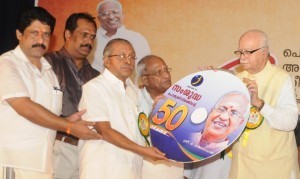
कार्यक्रम में मुख्य अतिथि के रुप में, मैंने सभी राजनीतिक कार्यकर्ताओं से दलगत दायरों से ऊपर एकजुट होकर तथा ईमानदारीपूर्वक भारत को दुनिया में अग्रणी बनाने के लिए काम करने का अनुरोध किया। विपक्ष के नेता वी.एस. अच्युतानन्दन ने मुख्य भाषण देते हुए कहा कि यद्यपि राजनीति में वह और श्री राजगोपाल एक-दूसरे के विरोधी धु्रव पर हैं, परन्तु तब भी वे गहरे मित्र हैं। हालांकि, माकपा और भाजपा ने आपातकाल के विरुध्द संघर्ष की छोटी अवधि में मिलकर काम किया, और इस अवधि के दौरान वह तथा श्री राजगोपाल कारावास में एक साथ बंदी थे।
कार्यक्रम की अध्यक्षता गांधी स्मारक निधि के चेयरमैन पी. गोपीनाथन नायर ने की। उनके अलावा सम्बोधित करने वालों में थे स्वास्थ्य मंत्री वी. एस. शिवाकुमार, भाकपा के राज्य सचिव पानियन रविन्द्रन, कवि ओ.एन.वी. कुरुप, महापौर के. चंद्रिका, भाजपा के वरिष्ठतम सहयोगी परमेश्वरन, राज्य भाजपा के अध्यक्ष वी. मुरलीधरन, केरल कांग्रेस के नेता वी. सुरेन्द्रन पिल्लई, साइरो-मलानकरा कैथोलिक चर्च ऑक्सिलॅरी बिशप सैम्युल मार इरेनियस, स्वामी तत्वारुपानंदा और एन आई एम एस मेडीसिटी के मैंनेजिंग डायरेक्टर एम.एस. फैजल खान-भी थे।
लालकृष्ण आडवाणी
नई दिल्ली
4 जनवरी, 2013

January 3, 2013
LET COUNTRY EMULATE KERALA’S INITIATIVE ON SREE NARAYANA GURU
New Year has just commenced. I am happy that on the last day of December, 2012, I was in Kerala, and was able to visit Sivagiri, a pilgrim spot associated with the hallowed memory of Sree Narayana Guru, a great yogi and a siddha, revered by Mahatma Gandhi for his unrelenting crusade against untouchability and casteism.
 The Guru was born at a time when the practice of untouchability was at its worst. There were people whose sight itself was supposed to cause defilement to others. In temples for a deity, lakhs who believed in the same deity and religion, were not allowed even to enter.
The Guru was born at a time when the practice of untouchability was at its worst. There were people whose sight itself was supposed to cause defilement to others. In temples for a deity, lakhs who believed in the same deity and religion, were not allowed even to enter.
I recall that it was in 1987 that I had been first invited to visit Sivagiri Mutt in Varkala some 45 kms. from Thiruvananthapuram. I was asked to be Chief Guest at the 3-day celebrations that are held there every year since 1932. Because of bad weather, the flights for Thiruvananthapuram were cancelled, and I could not go. Sivagiri is a hillock in Varkala where lakhs of the Guru’s devotees visit to pay homage to his Samadhi, and the shrine of Sharda (Saraswati) that he has installed here.
Prior to installing this pratima of Saraswati at Sivagiri, Sree Narayana Guru had set up a shrine of Siva at Aruvippuram. So when in 1987 I failed to go to Sivagiri I somewhat made up for this when I visited Aruvippuram a year later. This year of course, I started my inaugural speech with apologizing to the large audience of pilgrims there clothed in peethambara (yellow) clothes that I had come to this sacred place 25 years late!
The 3-day celebrations were conceived by Sree Narayan Guru and announced before his death in 1928. These take place annually on December 30, 31 and January 1. On December 30, the celebrations are formally opened by the State Chief Minister. The second day’s function is the Teerthdanam Sammelanam which this year I was asked to inaugurate. This was presided over by Union Minister Shri Vyalar Ravi. On the last day there are several eminent scholars who speak about different aspects of the Code of Ethics laid down by Sree Narayana Guru.
In my address I welcomed Chief Minister Oomen Chandi’s announcement the previous day that from 2013 onwards Sree Narayan Guru’s teachings would be part of the School syllabus in Kerala State.



It is indeed unfortunate that in Indian schools, the teaching of history is almost entirely focused on kings, their dynasties, their wars and exploits. The remarkable contributions of our sages and seers are generally kept away from the children, and often on the plea that in a secular state anything to do with religion is taboo. This is an absurd approach. So in my speech at Sivagiri I urged Union Minister Vyalar Ravi to ensure that Kerala’s initiative is emulated by the Centre and other states. It would elevate the level of school studies if the teachings and ideals of saints like Swami Dayanand Saraswati, Shri Ramakrishna Paramahansa and Swami Vivekananda are part of the normal curriculum.
The Union Minister for Overseas Indians Shri Ravi responded by saying that he would take up the issue with the Prime Minister.
In my speech that day I recalled that while in school we had gathered that the touchstone for judging a student’s intelligence level was knowing how high or low was his or her IQ that is, Intelligence Quotient. Later, when I happened to read a book titled E.Q., it made me appreciate that while judging an individual’s personality, his IQ may be important, but his E.Q. which meant Emotional Quotient is even more important. Emotional Quotient meant how susceptible a person is to emotions like anger, envy etc. I said that day what the Kerala State has done and what I urge should be done by educational institutions all over the country is something that would raise the Spiritual Quotient also of all our countrymen. While coining this S.Q. phrase, I do not have any religion or creed in mind, I am thinking only of the ethical and moral values a student imbibes in his institution.
Shortly before he passed away in 1902, Swami Vivekananda ji had remarked that the country needs a man-making machinery that is able to produce Men with a Capital M. What he had in mind were men with high IQ, EQ and SQ, that is men with an exceptionally high character and extraordinary ability and talent.
Our educational institutions would be rendering signal service to the country if they succeeded in evolving an educational system which could become the Man-making machinery Swami Vivekananda had talked about!
***
In Thiruvananthapuram itself, on the eve of my visit to Sivagiri, I attended another impressive function organised to honour Shri O. Rajagopal, my party colleague for many years, and also a ministerial associate in Shri Vajpayee’s government, on the completion of Rajagopalji’s fifty years in public life.
All those who spoke at the packed Kerala University’s Senate Auditorium paid rich encomiums to our Kerala leader for his ability and integrity, and the conscious contribution he had made for Kerala’s welfare when he was a Union Minister in the NDA Government. But what I deem significant was the galaxy of leaders who turned up to greet Rajagopalji that day. Representatives from the entire political and social spectrum were present on the dias.

As Chief Guest at the programme, I urged political activists cutting across party lines to work together and conscientiously to take India to the forefront of nations. Delivering the keynote address, Leader of the Opposition V.S. Achuthanandan said that although he and Mr. Rajagopal occupied diametrically opposed poles in politics, they retained a close friendship. However, the CPI(M) and the BJP had worked together for a brief period, in the fight against Emergency, and he and Mr. Rajagopal were in prison together during the period.
Gandhi Smarak Nidhi chairman P. Gopinathan Nair chaired the meeting which was addressed by, among others, Health Minister V.S. Sivakumar, CPI State secretary Pannian Ravindran, poet O.N.V. Kurup, Mayor K. Chandrika, BJP veteran Parameswaran, BJP State president V. Muralidharan, Kerala Congress leader V. Surendran Pillai, Syro-Malankara Catholic Church Auxiliary Bishop Samuel Mar Irenius, Swami Tatvaroopananda, and NIMS Medicity managing director M.S. Faisal Khan.
L.K. Advani
New Delhi
04 January, 2013

December 24, 2012
दरबार : एक अत्यन्त रोचक पुस्तक
पत्रकार तवलीन सिंह द्वारा लिखित पुस्तक ‘दरबार‘ पर मीडिया में मिश्रित प्रतिक्रिया हुई है। तहलका जैसी पत्रिकाओं ने प्रकाशित किया है कि यह पुस्तक गांधी परिवार के विरूध्द ”पुराने हिसाब किताब चुकाने” के उद्देश्य से लिखी गई एक गपशप है। जबकि दूसरी और दि एशियन एज ने पुस्तक की समीक्षा ‘दिल्ली दरबार के रहस्यपूर्ण वातावरण से पर्दा उठना‘ (Unraveling the mystique of Delhi’s Durbar) शीर्षक से प्रकाशित की है। हालांकि कोई भी इससे इंकार नहीं कर सकता कि तवलीन की नवीनतम पुस्तक अत्यन्त ही रोचक पठनीय है।
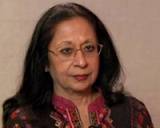 ‘एशियन एज‘ में समीक्षक अशोक मलिक की यह टिप्पणी बिल्कुल सही है कि अपनी सारी पहुंच के बावजूद राजधानी में राजनीतिक पत्रकार अक्सर लुटियन्स दिल्ली के लिए अंतत: बाहरी ही रहते हैं। कम से कम 10 जनपथ के संदर्भ में यह शत-प्रतिशत सत्य है।
‘एशियन एज‘ में समीक्षक अशोक मलिक की यह टिप्पणी बिल्कुल सही है कि अपनी सारी पहुंच के बावजूद राजधानी में राजनीतिक पत्रकार अक्सर लुटियन्स दिल्ली के लिए अंतत: बाहरी ही रहते हैं। कम से कम 10 जनपथ के संदर्भ में यह शत-प्रतिशत सत्य है।
‘नीति सेंट्रल‘ के लिए की गई पुस्तक समीक्षा में अशोक मलिक तवलीन को ”अंदर की पूरी जानकारी रखने वाली एक अंतरंग” के रूप में निरूपित करते हुए पुस्तक पर अपनी टिप्पणी को अपने लेख के शुरूआत में इस तरह लिखते हैं:
”तवलीन सिंह की नई पुस्तक दरबार में कहानियां हैं, किस्से हैं और निपट गपशप भी है जो सिर्फ लुटियन्स जोन स्वाभाविक रूप से उपलब्ध कराती है। इसमें पैने अभिमत, राजनीतिक अंदरूनी चीजें, भारत की सामाजिक और आर्थिक समस्याओं सम्बन्धी अनुमान और नीतियों की असफलताएं हैं, जो एक सतर्क पत्रकार ने प्रस्तुत किया है”।
अनगिनत समस्याओं वाला भारत एक विशाल देश है। संविधान और कानून सरकार को देश का शासन प्रभावी ढंग से चलाने की सभी जिम्मेदारी प्रदान करते हैं। जैसाकि सभी लोकतंत्रों में लोकतांत्रिक तंत्र का मुखिया प्रधानमंत्री होता है। लेकिन देश में सभी जानते हैं कि आज के भारत में मुखिया प्रधानमंत्री नहीं अपितु कांग्रेस अध्यक्ष हैं। यही वह स्थिति है जो इन दिनों देश की अनेक समस्याओं की मूल जड़ है।
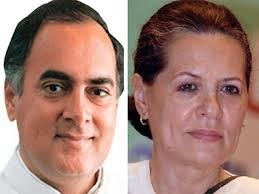 यह पुस्तक अपने पाठकों को बताती है कि एक समय था जब इसकी लेखक का न केवल राजीव गांधी के साथ अपितु श्रीमती सोनिया गांधी के साथ भी घनिष्ठ सम्बन्ध था। तब अचानक यह निकटता समाप्त हो गई। अशोक मलिक लिखते हैं : तवलीन की पुस्तक हमें ”10 जनपथ की रहस्यात्मकता या गुप्तता” को समझने में सहायता करती है।
यह पुस्तक अपने पाठकों को बताती है कि एक समय था जब इसकी लेखक का न केवल राजीव गांधी के साथ अपितु श्रीमती सोनिया गांधी के साथ भी घनिष्ठ सम्बन्ध था। तब अचानक यह निकटता समाप्त हो गई। अशोक मलिक लिखते हैं : तवलीन की पुस्तक हमें ”10 जनपथ की रहस्यात्मकता या गुप्तता” को समझने में सहायता करती है।
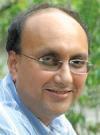 मलिक द्वारा ”इंदिरा गांधी हत्याकाण्ड में राजीव के और सोनिया के सामाजिक मित्रों को फंसाने के विचित्र दुष्टताभरे अभियान” की ओर इंगित करने ने ‘मुझे पुस्तक के अध्याय 14 के उन सभी आठ पृष्ठों को पढ़ने को बाध्य किया‘ जिनपर मलिक की टिप्पणी आधारित है। तवलीन से भी इस सम्बन्ध में इंटेलीजेंस ब्यूरो (आई0बी0) ने पूछताछ की थी। इस प्रकरण के सम्बन्ध में तवलीन का अंतिम पैराग्राफ हमारी गुप्तचर एजेंसियों की काफी निंदा करता है:
मलिक द्वारा ”इंदिरा गांधी हत्याकाण्ड में राजीव के और सोनिया के सामाजिक मित्रों को फंसाने के विचित्र दुष्टताभरे अभियान” की ओर इंगित करने ने ‘मुझे पुस्तक के अध्याय 14 के उन सभी आठ पृष्ठों को पढ़ने को बाध्य किया‘ जिनपर मलिक की टिप्पणी आधारित है। तवलीन से भी इस सम्बन्ध में इंटेलीजेंस ब्यूरो (आई0बी0) ने पूछताछ की थी। इस प्रकरण के सम्बन्ध में तवलीन का अंतिम पैराग्राफ हमारी गुप्तचर एजेंसियों की काफी निंदा करता है:
”जांच के अंत में, हमारी गुप्तचर एजेंसियों के स्तर के बारे में मुझे गंभीर चिंता हुई। इसलिए मुझे कोई आश्चर्य नहीं हुआ जब कुछ महीने बाद यह जांच कि भारत के प्रधानमंत्री की हत्या में कोई बड़ा षडयंत्र था, को चुपचाप समाप्त होने दिया गया।”
312 पृष्ठों वाले इस संस्मरण की शुरूआत में लेखक का चार पृष्ठीय ‘नोट‘ है। इस पुस्तक में तवलीन सिंह की टिप्पणियों से आप असहमत हो सकते हैं और उनके कुछ निष्कर्षों को चुनौती दे सकते हैं। लेकिन मुझे उनके इस शुरूआती ‘नोट‘ में दम लगता है जिसे इस अंतिम पैराग्राफ में सारगर्भित ढंग से समाहित किया गया है:
”दरबार लिखना मुश्किल था। राजीव गांधी की मृत्यु के तुरंत बाद मैंने इसे लिखना शुरू किया। मैं उन्हें तब से जानती थी जब वह एक राजनीतिज्ञ नहीं थे और अपने को मैंने इस अनोखी स्थिति में पाया कि उन्हें यह बता सकूं कि कैसे भारतीय इतिहास में सर्वाधिक प्रचण्ड बहुमत वाला प्रधानमंत्री अंत में कैसे निराशाजनक स्थिति में पहुंचा। केवल इसलिए नहीं कि मैं भी उस छोटे से सामाजिक ग्रुप का हिस्सा थी जिसमें वह भी थे , लेकिन इसलिए कि एक पत्रकार के रूप में मेरा कैरियर इस तरह से बदला कि मैंने उस भारत को देखा जो राजीव के एक राजनीतिज्ञ के रूप में लगभग समानांतर चलता रहा था। तब मुझे लगा कि उन्होंने भारत की अपेक्षाओं को पूरा नहीं किया लेकिन जब मैं इस पुस्तक को लिखने बैठी तो मुझे अहसास हुआ कि वही अकेले नहीं थे जिन्होंने भारत को शर्मिंदा किया। एक समूचे सत्तारूढ़ वर्ग ने ऐसा किया। वह सत्तारूढ़ वर्ग जिससे मैं भी सम्बन्धित हूं।
जैसे कहानी आगे बढ़ती है यह मानों मेरे अपने जीवन का दर्पण है , राजनीतिज्ञ के रूप में राजीव के संक्षिप्त जीवन और कैसे वंशानुगत लोकतंत्र के बीज बोए गए-का ही यह एक संस्मरण नहीं है बल्कि एक पत्रकार के रूप में मेरा भी है। मैंने पाया कि पत्रकारिता की स्पष्ट दृष्टि ने उस देश को समझने के मेरे नजरिए को बदला जिसमें मैं अपने सारे जीवन भर रही हूं। और इसने मूलभूत रूप से उस नजरिए को बदला जिसमें मैं उन लोगों को देख सकी जिनके साथ मैं पली-बढ़ी। मैंने देखा कि कैसे वे भारत से अलिप्त हैं, उसकी संस्कृति और इतिहास उनके लिए कैसे विदेशी हैं, और इसी के चलते वे पुनर्जागरण और परिवर्तन लाने में असफल रहे। मैंने देखा कि एक पत्रकार के रूप में मेरे जीवन ने उन द्वारों को खोला जिनसे मुझे लगातार शर्म महसूस हुई कि कैसे मेरे जैसे लोगों ने भारत के साथ विश्वासघात किया है। मैं मानती हूं कि इसी के चलते भारत को उसके सत्तारूढ़ वर्ग ने शर्मिंदा किया है और वह वैसा देश नहीं बन पाया जैसा उसे बनना चाहिए था। यदि हम कम विदेशी होते और भारत की भाषाओं और साहित्य की महान संपदा, राजनीति और शासन सम्बन्धी उसके प्राचीन मूलग्रंथों और उसके ग्रंथों के बारे में और ज्यादा सचेत होते तो हम अनेक चीजों में परिवर्तन कर पाते लेकिन हम असफल रहे और अपने बच्चों कीे उनके ही देश में अपनी तरह, विदेशियों की तरह पाला। सभी विदेशी चीजों पर मंत्रमुग्ध और सभी भारतीय चीजों का तिरस्कार।
एक नया सत्तारूढ़ वर्ग धीरे से पुराने का स्थान ले रहा है। एक नयी , अभद्र राजनीतिज्ञों का वर्ग सत्ता पर नियंत्रण हेतु सामने आ रहा है। किसानों और चपरासियों के बच्चे और उन जातियों जो कभी अस्पृश्य माने जाते थे, की संतानें भारत के कुछ बड़े प्रदेशों पर शासन कर चुके हैं। लेकिन पुराने सत्तारूढ़ की बराबरी की चेष्टा में वे अपने बच्चों को अंग्रेजी पढ़ाते हैं और उन्हें पश्चिम के विश्वविद्यालयों में भेजते हैं। इसमें भी कोई हर्जा नहीं है बशर्ते कि वे उन्हें अपनी भाषाओं और संस्कृति से विमुख नहीं करते हों।
एक भारतीय पुनर्जागरण की संभावना , जैसाकि पहली पीढ़ी के उन भारतीयों जो उपनिवेश के बाद के भारत में पली-बढ़ी है, हमारी हो सकती थी और सिमटती और दूर होती जा रही है। सत्तारूढ़ वर्ग के हाथों में एक राजनीतिक हथियार-वंशवाद, देश जिसकी आत्मा पहले से ही शताब्दियों से गहरे ढंग से दागदार है के नए उपनिवेश का मुख्य स्त्रोत बनता जा रहा है। यह वह मुख्य कारण है जिसके चलते तेजी से विस्तारित और फैलते शिक्षित मध्यम वर्ग का लोकतंत्र और लोकतांत्रिक संस्थाओं से मोहभंग होता जा रहा है।
तवलीन की इन पंक्तियों ने मुझे लार्ड मैकाले द्वारा फरवरी 1835 में ब्रिटिश संसद में की गई टिप्पणियों का स्मरण करा दिया:
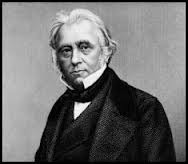 ”मैंने पूरे भारत की यात्रा की और ऐसा व्यक्ति नहीं देखा जो कि भिखारी हो या चोर हो। इस तरह की संपत्ति मैंने इस देश में देखी है, इतने ऊंचे नैतिक मूल्य, लोगों की इतनी क्षमता, मुझे नहीं लगता कि कभी हम इस देश को जीत सकते हैं, जब तक कि हम इस देश की रीढ़ को नहीं तोड़ देते, जो कि उसकी सांस्कृतिक और आध्यात्मिक विरासत में है। इसलिए मैं प्रस्ताव करता हूं कि हमें इसकी पुरानी और प्राचीन शिक्षा-व्यवस्था, इसकी संस्कृति को बदलना होगा। इसके लिए यदि हम भारतीयों को यह सोचना सिखा दें कि जो भी विदेशी है और अंग्रेज है, वह उसके लिए अच्छा और बेहतर है, तो इस तरह से वे अपना आत्मसम्मान खो देंगे, अपनी संस्कृति खो देंगे और वे वही बन जाएंगे जैसा हम चाहते हैं-एक बिल्कुल गुलाम देश।”
”मैंने पूरे भारत की यात्रा की और ऐसा व्यक्ति नहीं देखा जो कि भिखारी हो या चोर हो। इस तरह की संपत्ति मैंने इस देश में देखी है, इतने ऊंचे नैतिक मूल्य, लोगों की इतनी क्षमता, मुझे नहीं लगता कि कभी हम इस देश को जीत सकते हैं, जब तक कि हम इस देश की रीढ़ को नहीं तोड़ देते, जो कि उसकी सांस्कृतिक और आध्यात्मिक विरासत में है। इसलिए मैं प्रस्ताव करता हूं कि हमें इसकी पुरानी और प्राचीन शिक्षा-व्यवस्था, इसकी संस्कृति को बदलना होगा। इसके लिए यदि हम भारतीयों को यह सोचना सिखा दें कि जो भी विदेशी है और अंग्रेज है, वह उसके लिए अच्छा और बेहतर है, तो इस तरह से वे अपना आत्मसम्मान खो देंगे, अपनी संस्कृति खो देंगे और वे वही बन जाएंगे जैसा हम चाहते हैं-एक बिल्कुल गुलाम देश।”
मैकाले द्वारा अपनाई गई उपनिवेशवादी नीति अंग्रेजों द्वारा भारत लागू शिक्षा व्यवस्था में विद्यमान थी। इसका प्रभाव स्वतंत्रता के बाद भी बना हुआ है। वे लोग जो केवल हिंदी या कोई भारतीय भाषा बोलते हैं और अच्छी अंग्रेजी नही बोल पाते, उन्हें हमारे देश में निकृष्ट समझा जाता है। मैंने अक्सर इस तथ्य को समझने के लिए अपना उदाहरण दिया है। मैं अपने जीवन के आरंभिक बीस वर्षों में-जो मैंने सिंध में बिताए-बहुत कम हिंदी जानता था। राजस्थान आने के बाद मैंने परिश्रमपूर्वक इसका अध्ययन किया। लेकिन मुझे वर्ष 1957 में दिल्ली आने पर यह अनुभव हुआ कि अंग्रेजी भारत में उंचा स्थान कैसे रखती है।
उदाहरण के लिए, जब भी टेलीफोन की घंटी बजती थी और मैं इसे उठाता था, मेरा पहला वाक्य होता था आज भी है-‘हां, जी’ जिसके जवाब में अक्सर उधर से पूछा जाता था, ‘साहब घर में हैं?’ यह मान लिया जाता था कि घर से कोई नौकर बोल रहा है। और मैं उनसे कहता था, ‘आपको आडवाणी से बात करनी है तो मैं बोल रहा हूं।‘
टेलपीस (पश्च्यलेख)
मेरा मानना है कि तवलीन की पुस्तक के पाठक अध्याय पांच शीर्षक 1977 चुनाव को बड़े चाव से पढ़ेंगे-विशेषकर इस चुनावी भाषण के उदाहरण को, सर्वश्रेष्ठ वाजपेयी ( Vintage Vajpayee )।
जब दिल्ली की दीवारों पर पहला पोस्टर लगा कि रामलीला मैदान में एक रैली होगी जिसे प्रमुख विपक्षी नेता सम्बोधित करेंगे , तो हम सभी को लगा कि यह एक मजाक है।
स्टेट्समैन के रिपोरटर्स कक्ष में यह धारणा थी कि यदि पोस्टर सही भी हैं तो रैली फ्लॉप होगी क्योंकि लोग इसमें भाग लेने से डरेंगे। अभी भी आपातकाल प्रभावी था और पिछले अठारह महीनों से बना भय का वातावरण छंटा नहीं था।
चीफ रिपोर्टर राजू , सदैव की भांति निराशावादी था और उसने कहा कि श्रीमती गांधी को कोई हरा नहीं सकता, इसलिए इसमें कोई दम नहीं है। ‘यहां तक कि यह विपक्ष की रैली है, इससे कोई फर्क नहीं पड़ेगा। यदि उन्हें अपनी जीत के बारे में थोड़ा भी संदेह होता तो वह चुनाव नहीं कराती‘।
‘हां, लेकिन वह गलती तो कर सकती है,’ मैंने कहा। ‘मैंने सुना है कि उनका बेटा और उत्तराधिकारी इसके विरुध्द थे। उन्होंने बताया कि वह हार सकती हैं।‘ अनेक वर्ष बाद जब संजय गांधी के अच्छे दोस्त कमलनाथ दिल्ली में कांग्रेस सरकार में केबिनेट मंत्री थे, से मैंने पूछा कि क्या यह सही है कि संजय ने अपनी मां के चुनाव कराने सम्बन्धी निर्णय का विरोध किया था, कमलनाथ ने इसकी पुष्टि की। उन्होंने बताया कि जब उन्होंने चुनावों के बारे में सुना तब संजय और वह श्रीनगर में एक साथ थे और इस पर संजय काफी खफा थे।
जब हम मैदान पर पहुंचे तो हमने दखा कि लोग सभी दिशाओं से उमड़ रहे हैं। मगर अंदर और ज्यादा भीड़ थी। इतनी भीड़ मैंने कभी किसी राजनीतिक रैली में नहीं देखी थी। भीड़ रामलीला मैदान के आखिर तक और उससे भी आगे तक भरी हुई थी।
लगभग शाम को 6 बजे विपक्षी नेता सफेद एम्बेसडर कारों के काफिले में पहुंचे। एक के बाद एक ने मंच पर उबाऊ, लम्बे भाषण दिए कि उन्होंने जेल में कितने कष्ट उठाए। हिन्दुस्तान टाइम्स के अपने एक सहयोगी को मैंने कहा यदि किसी ने कोई प्रेरणादायक भाषण देना शुरु नहीं किया तो लोग जाना शुरु कर देंगे। उस समय रात के 9 बज चुके थे और रात ठंडी होने लगी थी यद्यपि बारिश रुक गई थी। उसने मुस्कराहट के साथ उत्तर दिया ‘चिंता मत करो, जब तक अटलजी नहीं बोलेंगे, कोई उठकर नहीं जाएगा।‘ उसने एक छोटे से व्यक्ति की ओर ईशारा किया जिसके बाल सफेद थे और उस शाम के अंतिम वक्ता थे। ‘क्यों?’ ‘क्योंकि वह भारत के सर्वश्रेठ वक्ता हैं।‘
जब अटलजी की बारी आई उस समय तक रात के 9.30 बज चुके थे और जैसे ही वह बोलने के लिए खड़े हुए तो विशाल भीड़ खड़ी हो गई और तालियां बजानी शुरु कर दी: पहले थोड़ा हिचक कर, फिर और उत्साह से उन्होंने नारा लगाया, ‘इंदिरा गांधी मुर्दाबाद, अटल बिहारी जिंदाबाद!‘ उन्होंने नारे का जवाब नमस्ते की मुद्रा और एक हल्की मुस्कान से दिया। तब उन्होंने भीड़ को शांत करने हेतु दोनों हाथ उठाए और एक मजे हुए कलाकार की भांति अपनी आंखे बंद कीं, और कहा बाद मुद्दत के मिले हैं दिवाने। उन्होंने चुप्पी साधी। भीड़ उतावली हो उठी। जब तालियां थमीं उन्होंने अपनी आंखें फिर खोलीं और फिर लम्बी चुप्पी के बाद बोले ‘कहने सुनने को बहुत हैं अफसाने।‘ तालियों की गड़गडाहट लम्बी थी और इसकी अंतिम पंक्ति जो उन्होंने बाद में मुझे बताई थी , तभी रची: ‘खुली हवा में जरा सांस तो ले लें, कब तक रहेगी आजादी कौन जाने।‘ अब भीड़ उन्मत्त हो चुकी थी।
रात की ठंड बढ़ने और फिर से शुरु हुई हल्की बूंदाबांदी के बावजूद कोई भी अपने स्थान से नहीं हटा। उन्होंने अटलजी को पूरी शांति के साथ सुना।
सरल हिन्दी में , वाकपटुता से अटलजी ने उन्हें बताया कि क्यों उन्हें इंदिरा गांधी को वोट नहीं देना चाहिए। उस रात दिए गए भाषण की प्रति मेरे पास नहीं है और वैसे भी वह बिना तैयारी के बोले थे, लेकिन जो मुझे याद है उसे मैं यहां सविस्तार बता सकती हूं। उन्होंने शुरु किया आजादी, लोकतांत्रिक अधिकारों, सत्ता में बैठे लोगों से असहमत होने का मौलिक अधिकार, जब तक आपसे ले लिए नहीं जाते उनका कोई अर्थ नहीं होता। पिछले दो वर्षों में यह न केवल ले लिए गए बल्कि जिन्होंने विरोध करने का साहस किया उन्हें दण्डित किया गया। जिस भारत को उसके नागरिक प्यार करते थे, अब मौजूद नहीं था। उन्होंने यह कहते हुए जोड़ा कि यह विशाल बंदी कैम्प बन गया है, एक ऐसा बंदी कैंप जिसमें मनुष्य को मनुष्य नहीं माना जाता। उनके साथ इस तरह से बर्ताव किया गया कि उन्हें उनकी इच्छा के विरुध्द काम करने को बाध्य किया गया जोकि एक मनुष्य की स्वतंत्र इच्छा के विरुध्द नहीं किया जाना चाहिए। विपक्षी नेता (उन्होंने कहा ‘हम‘) जानते हैं कि भारत की बढ़ती जनसंख्या के बारे में कुछ करने की जरुरत है; वे परिवार नियोजन का विरोध नहीं करते, लेकिन वे इसमें भी विश्वास नहीं करते कि मनुष्यों को जानवरों की तरह ट्रकों में डालकर उनकी इच्छा के विरुध्द उनकी नसबंदी कर दी जाए और वापस भेज दिया जाए। इस टिप्पणी पर तालियां बजीं और बजती रहीं, बजती रहीं तथा चुनाव वाले दिन ही मुझे समझ आया कि यह क्यों बज रहीं थीं।
अटलजी के भाषण समाप्ति के रुकी भीड़ ने और विपक्षी नेता अपनी सफेद एम्बेसेडर कारों में बैठे तथा भीड़ को छोड़ चले गए मानों तय किया था कि प्रेरणास्पद भाषण सुनने के बाद तालियों से भी ज्यादा कुछ और करना है। इसलिए जब पार्टी कार्यकर्ता चादर लेकर चंदा इक्ठ्ठा करते दिखाई दिए तो सभी ने कुछ न कुछ दिया। जनवरी की उस सर्द रात को मैंने देखा कि रिक्शा वाले और दिल्ली की सड़कों पर दयनीय हालत में रहने वाले दिहाड़ी मजदूर भी जो दे सकते थे , दे रहे थे तो पहली बार मुझे लगा कि इंदिरा गांधी के चुनाव हारने की संभावना हो सकती है।
लालकृष्ण आडवाणी
नई दिल्ली
23 दिसम्बर, 2012

December 22, 2012
DURBAR : AN EXTREMELY INTERESTING BOOK
‘Durbar’ written by journalist Tavleen Singh has received a mixed response in the media. Some papers, like Tehelka, have rubbished the book by describing it as gossipy tattle against the Gandhi family in an attempt “to settle old scores.” On the other hand, The Asian Age has hailed the publication by titling its review of the book “Unraveling the mystique of Delhi’s durbar.” However, no one can deny that Tavleen’s new book makes for extremely interesting reading.
 Asian Age reviewer Ashok Malik is very correct in his observation that for all their access, political journalists in the capital are often the ultimate outsiders in Lutyens Delhi. At least in so far as 10, Janpath is concerned, this is cent per cent true.
Asian Age reviewer Ashok Malik is very correct in his observation that for all their access, political journalists in the capital are often the ultimate outsiders in Lutyens Delhi. At least in so far as 10, Janpath is concerned, this is cent per cent true.
In a book review written for Niti Central, Ashok Malik describes Tavleen as “an insider with insight,” and sums up his opinion on the book in the opening sentence of his write up:
“Tavleen Singh’s new book Durbar has the stories, the anecdotes, and the sheer gossip that only a Lutyens Zone natural can provide. It also has the sharp opinions, the political insights, and the assessments of India’s social and economic problems, and policy failures, that it takes a watchful journalist to provide.”
India is a vast country with myriads of problems. The constitution and the law empowers government with all the authority needed to administer the country effectively. As in all democracies the prime executive in a democratic establishment is the Prime Minister. But as everyone in the country knows, the topmost person in India’s hierarchy today is not the Prime Minister, but the Congress President. It is this situation which is at the root of most maladies that afflict the country these days.
 This book tells its readers that there was a time when its author had very close relations not only with Rajiv Gandhi but also with Smt. Sonia Gandhi. Then suddenly, this closeness came to an end. Ashok Malik comments: Tavleen’s book helps us somewhat to breach “the secrecy or mystique of 10 Janpath.”
This book tells its readers that there was a time when its author had very close relations not only with Rajiv Gandhi but also with Smt. Sonia Gandhi. Then suddenly, this closeness came to an end. Ashok Malik comments: Tavleen’s book helps us somewhat to breach “the secrecy or mystique of 10 Janpath.”
 Malik’s quaint comment referring to a “bizarre rogue operation to implicate Rajiv’s and Sonia’s social friends in the Indira Gandhi assassination case ‘made me read closely all the eight pages of Chapter 14 of the book which formed the basis of Malik’s remark. Tavleen herself was questioned by the I.B. in this regard. Tavleen’s concluding paragraph of this episode adds up to a severe indictment of our intelligence agencies thus;
Malik’s quaint comment referring to a “bizarre rogue operation to implicate Rajiv’s and Sonia’s social friends in the Indira Gandhi assassination case ‘made me read closely all the eight pages of Chapter 14 of the book which formed the basis of Malik’s remark. Tavleen herself was questioned by the I.B. in this regard. Tavleen’s concluding paragraph of this episode adds up to a severe indictment of our intelligence agencies thus;
By the end of the inquisition, I found myself seriously worried about the standard of our intelligence agencies. It did not surprise me when, some months later, the investigation into whether there had been a larger conspiracy to kill the Prime Minister of India was allowed to quietly die away.”
***
This 312- page memoir is preceded by a four-page Author’s Note. You may disagree with Tavleen Singh’s comments in the book, and dispute some of her conclusions. But I feel that there is great weight in the thrust of her opening note which is succinctly contained in these concluding paragraphs:
Durbar has been difficult to write. I started to write it soon after Rajiv Gandhi died. I knew him well from the days when he was not a politician and found myself in a unique position to tell the story of how a prime minister with the largest mandate in Indian history ended up as such a disappointment. Not just because I happened to be a part of the same tiny social set in which he moved, but because my career as a journalist, that so changed the way I saw India, ran almost parallel with Rajiv’s career as a politician. I believed then that he had failed India but when I started to write the book I realized that he was not the only one who had let India down. An entire ruling class had. A ruling class to which I belonged.
As the story unfolded it became as if a mirror of my own life, a memoir not just of the short life of Rajiv as a politician and how the seeds of dynastic democracy were sown, but of my own as a journalist. I discovered how much the clear lens of journalism had changed my understanding of the country in which I had lived all my life. And this fundamentally changed the way in which I saw the people I had grown up with. I saw how aloof they were from India, how foreign her culture and history were to them, and how, because of this, they had failed to bring about renewal and change. I saw how my life as a journalist opened up doors that made me constantly ashamed of how India has been betrayed by people like me. I believe that it is because India was let down by her ruling class that she failed to become the country she could have been. If we had been less foreign and more aware of India’s great wealth of languages and literature, of her ancient texts on politics and governance and her scriptures, we would have wanted to change many things. But we failed and instead brought up our children, as we had been, as foreigners in their own country. Fascinated by all things foreign and disdainful of all things Indian.
A new ruling class is slowly replacing the old one. A newer, rougher breed of politician has come to control the levers of power. The sons of peasants and peons and the children of castes that were once considered untouchable have ruled some of India’s biggest states. But in emulation of the old ruling class they teach their children English and send them to Western universities. There would be no harm in this if they did not also bring them up removed from their own languages and culture.
The possibility of an Indian renaissance, that as the first generation of Indians to grow up in post-colonial India should have been ours to ensure, recedes further and further away. Dynasty, a political tool in the hands of the ruling class, has become the catalyst for a new colonization of a country whose soul has already been deeply scarred by centuries of it. This is the main reason why an expanding and increasingly educated middle class is becoming disenchanted with democracy and democratic institutions.
***
Tavleen’s summing up reminds me of Lord Macaulay’s revealing remarks made in the British Parliament way back in February 1835:
 “I have traveled across the length and breadth of India and I have not seen one person who is a beggar, who is a thief. Such wealth I have seen in this country, such high moral values, people of such caliber, that I do not think that we would ever conquer this country, unless we break the very backbone of this nation, which is her cultural and spiritual heritage, and, therefore, I propose that we replace her old and ancient education system, her culture, for if the Indians think that all that is foreign and English is good and greater than their own, they will lose their self esteem, their native culture and they will become what we want them – a truly dominated nation.”
“I have traveled across the length and breadth of India and I have not seen one person who is a beggar, who is a thief. Such wealth I have seen in this country, such high moral values, people of such caliber, that I do not think that we would ever conquer this country, unless we break the very backbone of this nation, which is her cultural and spiritual heritage, and, therefore, I propose that we replace her old and ancient education system, her culture, for if the Indians think that all that is foreign and English is good and greater than their own, they will lose their self esteem, their native culture and they will become what we want them – a truly dominated nation.”
Macaulay’s colonising strategy was ingrained in the education system introduced by the British in India. Somehow, its effect has survived even after Independence. Those who speak only Hindi or other Indian languages, and are not very conversant with English, are generally looked down upon in our country. I have often given a personal example to illustrate this point. I knew very little Hindi during the first twenty years of my life that I spent in Sindh. I was conversant with only two languages – my mother tongue, Sindhi, and with English. I could not read and write Devanagri. However, I studied it diligently after I came to Rajasthan. But it was only when I shifted to Delhi in 1957 that I realised how English enjoys a higher social status even in independent India.
For example, whenever the telephone rang and I happened to pick it up, my first expression would be – it still is – ‘Haanji’ (Hindi for ‘yes, please’). To which, many times the response from the other side used to be: ‘Sahab ghar mein hain’? (Is sahib at home?) The presumption obviously was that some servant in the house was speaking. And I would tell them, ‘Aap ko Advani se baat karni hai, to main bol raha hoon.’ (if you wish to speak to Advani, you are talking to the right person).
TAILPIECE
Readers of Tavleen’s book I am sure, would greatly savour Chapter V captioned 1977 Elections, particularly this sample of poll oratory, VINTAGE VAJPAYEE.
When the first posters appeared on Delhi’s walls announcing that a rally was to be held at the Ram Lila Maidan that would be addressed by the major opposition leaders all of us thought it was a joke.
In the Statesman reporters’ room the feeling was that even if the posters were genuine the rally would be a flop because people would be too scared to attend it. The Emergency was still in effect and the atmosphere of fear that the past eighteen months had created had not dissipated.
Mr. Raju, the chief reporter, was his usual pessimistic self and pronounced that since Mrs. Gandhi was undefeatable there was no point anyway. ‘Even if there’s going to be an opposition rally,’ ‘it will make no difference. She wouldn’t have gone for elections if she had any doubts about winning.’
‘Yes, but she could have made a mistake,’ I said. ‘I have heard that the son and heir was totally opposed to the idea. He told her they could lose.’ Many years later when Sanjay’s best friend Kamal Nath was a cabinet minister in a Congress government in Delhi, I asked him whether it was true that Sanjay had opposed his mother’s decision to have elections and he confirmed that it was. He said that Sanjay and he were together in Srinagar when they heard about the elections and Sanjay had been very upset.
When we got to the grounds we noticed that people were streaming in from all sides. But not even this prepared us for what we saw when we got inside. There were more people than I had ever seen at a political rally. The crowd stretched all the way to the end of the Ram Lila grounds and beyond.
At about 6 p.m., the opposition leaders arrived in a convoy of white Ambassadors. One by one they rose to make long, boring speeches about their travails in jail. I said to a colleague from the Hindustan Times that I thought people might start to leave unless somebody said something more inspirational. It was past 9 p.m. and the night had got colder although the rain had stopped. ‘Don’t worry,’ he replied with a smile, ‘ nobody will leave until Atalji speaks. Everyone here has come just to hear him.’ He pointed to a small man with steel-grey hair, the last speaker that evening. ‘Why?’ ‘Because he is the best orator in India.
It was well past 9.30 p.m. when Atalji’s turn finally came and as he rose to speak the huge crowd stood up and started to clap. Softly, hesitantly at first, then more excitedly, they shouted, ‘Indira Gandhi murdabad! Atal Behari zindabad!’ He acknowledged the slogans with hands joined in a namaste and a faint smile. Then, raising both arms to silence the crowd and closing his eyes in the manner of a practiced actor, he said, ‘Baad muddat ke mile hain deewane.’ (It has been an age since we whom they call mad have had the courage to meet) He paused. The crowd went wild. When the applause died he closed his eyes again and allowed himself another long pause before saying, ‘Kehne sunne ko bahut hain afsane.’ (There are tales to tell and tales to hear). The cheering was more prolonged, the last line of a verse that he told me later he had composed on the spur of the moment. ‘Khuli hawa mein zara saans to le lein, kab tak rahegi aazadi kaun jaane.’ (But first let us breathe deeply of the free air for we know not how long our freedom will last). The crowd was now hysterical.
Despite the night being so chilly, and a thin drizzle starting again, nobody left. They listened to Atalji in complete silence.
Eloquently, in simple Hindi, Atalji told them why they must not vote for Indira Gandhi. I no longer have a copy of the speech he made that night, and he spoke extempore, but I paraphrase here what I remember of it. Freedom, he began, democratic rights, the fundamental right to disagree with those who rule us, these things mean nothing until they are taken away. In the past two years they were not just taken away but those who dared to protest were punished. The India that her citizens loved no longer existed, he said, it became a vast prison camp, a prison camp in which human beings were no longer treated as human. They were treated with such contempt that they could be forced against their will to do things that should never be done against a human being’s free will. The opposition leaders (he said ‘we’) knew that something needed to be done about India’s expanding population; they did not oppose family planning, but they did not believe that human beings could be bundled into trucks like animals, sterilized against their will and sent back. The clapping this remark evoked went on and on and on an it would be only on election day that I would understand why.
Long after Atalji finished speaking and the opposition leaders got back into their white Ambassadors and drove off the crowds stayed as if they had collectively decided that they needed to do more than applaud a stirring speech. So when party workers appeared carrying soggy sheets in which they collected donations everyone gave something. On that cold January night as I watched rickshaw-wallas and those who lived on a pittance from manual labour on Delhi’s streets donate what they could I got my first inkling that there was a chance Indira Gandhi could lose the election.
L.K. Advani
New Delhi
23 December, 2012

November 10, 2012
सरदार पटेल की विलक्षण उपलब्धि
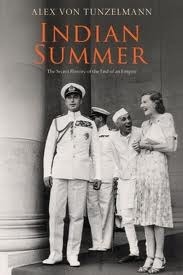 हाल ही में एक अत्यंत रोचक पुस्तक: इण्डियन समर% दि सीक्रेट हिस्ट्री ऑफ दि एण्ड ऑफ एन एम्पायर देखने को मिली। इसकी लेखिका एक जर्मन महिला हैं। जिनका नाम है आलेक्स फॉन टूनसेलमान। यह उनकी पहली पुस्तक है।
हाल ही में एक अत्यंत रोचक पुस्तक: इण्डियन समर% दि सीक्रेट हिस्ट्री ऑफ दि एण्ड ऑफ एन एम्पायर देखने को मिली। इसकी लेखिका एक जर्मन महिला हैं। जिनका नाम है आलेक्स फॉन टूनसेलमान। यह उनकी पहली पुस्तक है।
पुरस्कार विजेता इतिहासकार विलियम डलरिम्पल ने इस पुस्तक को ‘एक श्रेष्ठ कृति‘ और ”स्वतंत्रता तथा भारत व पाकिस्तान विभाजन पर मेरे द्वारा पढ़ी गई निस्संदेह उत्तम पुस्तक” के रुप में वर्णित किया है।
जब भारत पर अंग्रेजी राज था तब देश एक राजनीतिक इकाई नहीं था। इसके दो मुख्य घटक थे: पहला, ब्रिटिश भारत; दूसरा, रियासतों वाला भारत। रियासतों वाले भारत में 564 रियासतें थी।
वी.पी. मेनन की पुस्तक: दि स्टोरी ऑफ इंटग्रेशन ऑफ दि इण्डियन स्टेट्स में प्रसिध्द पत्रकार एम.वी. कामथ ने लेखक के बारे में यह टिप्पणी की है:
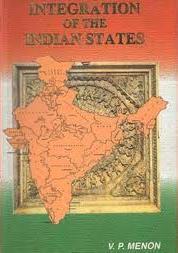 ”जबकि सभी रियासतों-जैसाकि उन्हें पुकारा जाता था-को भारत संघ में विलय कराने का श्रेय सरदार को जाता है, लेकिन वह भी ऐसा इसलिए कर पाए कि उन्हें एक ऐसे व्यक्ति का उदार समर्थन मिला जो राजाओं की मानसिकता और मनोविज्ञान से भलीभांति परिचित थे, और यह व्यक्ति कौन था? यह थे वापल पनगुन्नी मेनन-वी.पी. मेनन के नाम से उन्हें जल्दी ही पहचाना जाने लगा।”
”जबकि सभी रियासतों-जैसाकि उन्हें पुकारा जाता था-को भारत संघ में विलय कराने का श्रेय सरदार को जाता है, लेकिन वह भी ऐसा इसलिए कर पाए कि उन्हें एक ऐसे व्यक्ति का उदार समर्थन मिला जो राजाओं की मानसिकता और मनोविज्ञान से भलीभांति परिचित थे, और यह व्यक्ति कौन था? यह थे वापल पनगुन्नी मेनन-वी.पी. मेनन के नाम से उन्हें जल्दी ही पहचाना जाने लगा।”
”वीपी के प्रारम्भिक जीवन के बारे में कम जानकारी उपलब्ध है। एक ऐसा व्यक्ति जो सभी व्यवहारिक रुप से पहले, अंतिम वायसराय लार्ड लुईस माउंटबेटन और बाद में,, भारत के लौह पुरुष महान सरदार वल्लभ भाई पटेल के खासमखास बने, ने स्वयं गुमनामी में जाने से पहले अपने बारे में बहुत कम जानकारी छोड़ी। यदि वह सत्ता के माध्यम से कुछ भी पाना चाहते तो जो मांगते मिल जाता।”
यह पुस्तक वी.पी. मेनन द्वारा भारतीय इतिहास के इस चरण पर लिखे गए दो विशाल खण्डों में से पहली (1955) है। दूसरी पुस्तक (1957) का शीर्षक है: दि ट्रांसफर ऑफ पॉवर इन इण्डियाA
जिस पुस्तक ने मुझे आज का ब्लॉग लिखने हेतु बाध्य किया, उसमें रियासती राज्यों के मुद्दे पर ‘ए फुल बास्केट ऑफ ऐप्पल्स‘ शीर्षक वाला अध्याय है। इस अध्याय की शुरुआत इस प्रकार है:
”18 जुलाई को राजा ने लंदन में इण्डिया इंटिपेंडेंस एक्ट पर हस्ताक्षर किए और माउंटबेटन दम्पति ने अपने विवाह की रजत जयंती दिल्ली में मनाई, पच्चीस वर्ष बाद उसी शहर में जहां दोनों की सगाई हुई थी।”
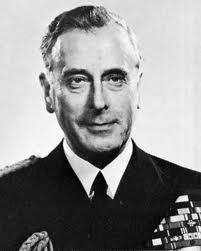 यह पुस्तक कहती है कि रियासती राज्यों के बारे में ब्रिटिश सरकार के इरादे ”अटली द्वारा जानबूझकर अस्पष्ट छोड़ दिए गए थे।” माउंटबेटन से यह अपेक्षा थी कि वह रियासतों की ब्रिटिश भारत से उनके भविष्य के रिश्ते रखने में सही दृष्टिकोण अपनाने हेतु सहायता करेंगे। नए वायसराय को भी यह बता दिया गया था कि ‘जिन राज्यों में राजनीतिक प्रक्रिया धीमी थी, के शासकों को वे अधिक लोकतांत्रिक सरकार के किसी भी रुप हेतु तैयार करें।”
यह पुस्तक कहती है कि रियासती राज्यों के बारे में ब्रिटिश सरकार के इरादे ”अटली द्वारा जानबूझकर अस्पष्ट छोड़ दिए गए थे।” माउंटबेटन से यह अपेक्षा थी कि वह रियासतों की ब्रिटिश भारत से उनके भविष्य के रिश्ते रखने में सही दृष्टिकोण अपनाने हेतु सहायता करेंगे। नए वायसराय को भी यह बता दिया गया था कि ‘जिन राज्यों में राजनीतिक प्रक्रिया धीमी थी, के शासकों को वे अधिक लोकतांत्रिक सरकार के किसी भी रुप हेतु तैयार करें।”
माउन्टबेंटन ने इसका अर्थ यह लगाया कि वह प्रत्येक राजवाड़े पर दबाव बना सकें कि वह भारत या पाकिस्तान के साथ जाने हेतु अपनी जनता के बहुमत के अनुरुप निर्णय करें। उन्होंने पटेल को सहायता करना स्वीकार किया और 15 अगस्त से पहले ‘ए फुल बास्केट ऑफ ऐपल्स‘ देने का वायदा किया।
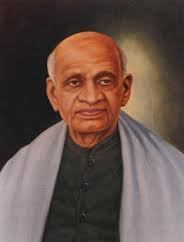 9 जुलाई को स्टेट्स के प्रतिनिधि अपनी प्रारम्भिक स्थिति के बारे में मिले। टुनसेलमान के मुताबिक अधिकांश राज्य भारत के साथ मिलना चाहते थे। ”लेकिन सर्वाधिक महत्वपूर्ण राज्यों में से चार-हैदराबाद, कश्मीर, भोपाल और त्रावनकोर-स्वतंत्र राष्ट्र बनना चाहते थे। इनमें से प्रत्येक राज्य की अपनी अनोखी समस्याएं थीं। हैदराबाद का निजाम दुनिया में सर्वाधिक अमीर आदमी था: वह मुस्लिम था, और उसकी प्रजा अधिकांश हिन्दू। उसकी रियासत बड़ी थी और ऐसी अफवाहें थीं कि फ्रांस व अमेरिका दोनों ही उसको मान्यता देने को तैयार थे। कश्मीर के महाराजा हिन्दू थे और उनकी प्रजा अधिकांशतया मुस्लिम थी। उनकी रियासत हैदराबाद से भी बड़ी थी परन्तु व्यापार मार्गों और औद्योगिक संभावनाओं के अभाव के चलते काफी सीमित थी। भोपाल के नवाब एक योग्य और महत्वाकांक्षी रजवाड़े थे और जिन्ना के सलाहकारों में से एक थे: उनके दुर्भाग्य से उनकी रियासत हिन्दूबहुल थी और वह भारत के एकदम बीचोंबीच थी, पाकिस्तान के साथ संभावित सीमा से 500 मील से ज्यादा दूर। हाल ही में त्रावनकोर में यूरेनियम भण्डार पाए गए, जिससे स्थिति ने अत्यधिक अंतर्राष्ट्रीय दिलचस्पी बड़ा दी।”
9 जुलाई को स्टेट्स के प्रतिनिधि अपनी प्रारम्भिक स्थिति के बारे में मिले। टुनसेलमान के मुताबिक अधिकांश राज्य भारत के साथ मिलना चाहते थे। ”लेकिन सर्वाधिक महत्वपूर्ण राज्यों में से चार-हैदराबाद, कश्मीर, भोपाल और त्रावनकोर-स्वतंत्र राष्ट्र बनना चाहते थे। इनमें से प्रत्येक राज्य की अपनी अनोखी समस्याएं थीं। हैदराबाद का निजाम दुनिया में सर्वाधिक अमीर आदमी था: वह मुस्लिम था, और उसकी प्रजा अधिकांश हिन्दू। उसकी रियासत बड़ी थी और ऐसी अफवाहें थीं कि फ्रांस व अमेरिका दोनों ही उसको मान्यता देने को तैयार थे। कश्मीर के महाराजा हिन्दू थे और उनकी प्रजा अधिकांशतया मुस्लिम थी। उनकी रियासत हैदराबाद से भी बड़ी थी परन्तु व्यापार मार्गों और औद्योगिक संभावनाओं के अभाव के चलते काफी सीमित थी। भोपाल के नवाब एक योग्य और महत्वाकांक्षी रजवाड़े थे और जिन्ना के सलाहकारों में से एक थे: उनके दुर्भाग्य से उनकी रियासत हिन्दूबहुल थी और वह भारत के एकदम बीचोंबीच थी, पाकिस्तान के साथ संभावित सीमा से 500 मील से ज्यादा दूर। हाल ही में त्रावनकोर में यूरेनियम भण्डार पाए गए, जिससे स्थिति ने अत्यधिक अंतर्राष्ट्रीय दिलचस्पी बड़ा दी।”
इस समूचे प्रकरण में मुस्लिम लीग की रणनीति इस पर केंद्रित थी कि अधिक से अधिक रजवाड़े भारत में मिलने से इंकार कर दें। जिन्ना यह देखने के काफी इच्छुक थे कि नेहरु और पटेल को ”घुन लगा हुआ भारत मिले जो उनके घुन लगे पाकिस्तान” के साथ चल सके। लेकिन सरदार पटेल, लार्ड माउंटबेंटन और वी.पी. मेनन ने एक ताल में काम करते हुए ऐसे सभी षडयंत्रों को विफल किया।
इस महत्वपूर्ण अध्याय की अंतिम पंक्तियां इस जोड़ी की उपलब्धि के प्रति एक महान आदरांजलि है। ऑलेक्स फॉन टुनेसलेमान लिखती हैं:
 ”माउंटबेटन की तरकीबों या पटेल के तरीकों के बारे में चाहे जो कहा जाए, उनकी उपलब्धि उल्लेखनीय रहेगी। और एक वर्ष के भीतर ही, इन दोनों के बारे में तर्क दिया जा सकता है कि इन दोनों ने 90 वर्ष के ब्रिटिश राज, मुगलशासन के 180 वर्षों या अशोक अथवा मौर्या शासकों के 130 वर्षों की तुलना में एक विशाल भारत, ज्यादा संगठित भारत हासिल किया।”
”माउंटबेटन की तरकीबों या पटेल के तरीकों के बारे में चाहे जो कहा जाए, उनकी उपलब्धि उल्लेखनीय रहेगी। और एक वर्ष के भीतर ही, इन दोनों के बारे में तर्क दिया जा सकता है कि इन दोनों ने 90 वर्ष के ब्रिटिश राज, मुगलशासन के 180 वर्षों या अशोक अथवा मौर्या शासकों के 130 वर्षों की तुलना में एक विशाल भारत, ज्यादा संगठित भारत हासिल किया।”
जो जर्मन महिला ने जो अर्थपूर्ण ढंग से लिखा है उसकी पुष्टि वी.पी. मेनन द्वारा दि स्टोरी ऑफ इंटीगिरेशन ऑफ दि इण्डियन स्टेट्स‘ के 612 पृष्ठों में तथ्यों और आंकड़ों से इस प्रकार की है।
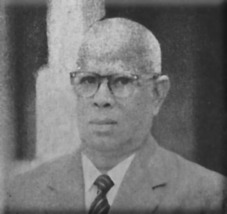 ”564 भारतीय राज्य पांचवा हिस्सा या लगभग आधा देश बनाते हैं: कुछ बड़े स्टेट्स थे, कुछ केवल जागीरें। जब भारत का विभाजन हुआ और पाकिस्तान एक पृथक देश बना तब भारत का 364, 737 वर्ग मील और 81.5 मिलियन जनसंख्या से हाथ धोना पड़ा लेकिन स्टेट्स का भारत में एकीकरण होने से भारत को लगभग 500,000 वर्ग मील और 86.5 मिलियन जनसंख्या जुड़ी जिससे, भारत की पर्याप्त क्षतिपूर्ति हुई।”
”564 भारतीय राज्य पांचवा हिस्सा या लगभग आधा देश बनाते हैं: कुछ बड़े स्टेट्स थे, कुछ केवल जागीरें। जब भारत का विभाजन हुआ और पाकिस्तान एक पृथक देश बना तब भारत का 364, 737 वर्ग मील और 81.5 मिलियन जनसंख्या से हाथ धोना पड़ा लेकिन स्टेट्स का भारत में एकीकरण होने से भारत को लगभग 500,000 वर्ग मील और 86.5 मिलियन जनसंख्या जुड़ी जिससे, भारत की पर्याप्त क्षतिपूर्ति हुई।”
स्टेट्स के एकीकरण सम्बंधी अपनी पुस्तक की प्रस्तावना में वी.पी. मेनन लिखते हैं: यह पुस्तक स्वर्गीय सरदार वल्लभभाई पटेल को किए गए वायदे की आंशिक पूर्ति है। यह उनकी तीव्र इच्छा थी कि मैं दो पुस्तकें लिखूं, जिसमें से एक में उन घटनाओं का वर्णन हो जिनके चलते सत्ता का हस्तांतरण हुआ और दूसरी भारतीय स्टेट्स के एकीकरण से सम्बन्धित हो।
टेलपीस (पश्च्यलेख)
30 अक्टूबर, 2012 को सरदार पटेल की जयंती की पूर्व संध्या पर ‘पायनियर‘ ने एक समाचार प्रकाशित किया कि कैसे प्रधानमंत्री नेहरु हैदराबाद की मुक्ति के सरदार की योजना को असफल करना चाहते थे।
समाचार इस प्रकार है:
”तत्कालीन उपप्रधानमंत्री और भारत के गृहमंत्री सरदार वल्लभभाई पटेल जिनकी 137वीं जयंती 31 अक्टूबर को है, को तब के प्रधानमंत्री पण्डित जवाहरलाल नेहरु द्वारा एक केबिनेट मीटिंग के दौरान अपमानित और लांछित किया गया। ”आप एक पूर्णतया साम्प्रदायिक हो और मैं तुम्हारे सुझावों और प्रस्तावों के साथ कभी पार्टी नहीं बन सकता”-नेहरु एक महत्वपूर्ण केबिनेट बैठक में सरदार पटेल पर चिल्लाए जिसमें निजाम की निजी सेना-रजाकारों के चंगुल से, सेना की कार्रवाई से हैदराबाद की मुक्ति पर विचार हो रहा था।
हतप्रभ सरदार पटेल ने मेज पर से अपने पेपर इक्ट्ठे किए और धीरे-धीरे चलते हुऐ कैबिनेट कक्ष से बाहर चले गए। यह अंतिम अवसर था जब पटेल ने कैबिनेट बैठक में भाग लिया। 1947 बैच के आईएस अधिकारी एम के नायर ने अपने संस्मरण ”विद नो इल फीलिंग टू एनीबॉडी” में लिखा है कि ”उन्होंने तब से नेहरु से बोलना भी बंद कर दिया।”
हालांकि नायर ने उपरोक्त वर्णित कैबिनेट बैठक की सही तिथि नहीं लिखी है, परन्तु यह हैदराबाद मुक्ति के लिए चलाए गए भारतीय सेना के अभियान ऑपरेशन पोलो, जो 13 सितम्बर, 1948 को शुरु होकर 18 सितम्बर को समाप्त हुआ, के पूर्ववर्ती सप्ताहों में हुई होगी।
जबकि सरदार पटेल 2,00,000 रजाकारों के बलात्कार और उत्पात से हैदराबाद को मुक्त कराने के लिए सेना की सीधी कार्रवाई चाहते थे, उधर नेहरु संयुक्त राष्ट्र के विकल्प को प्राथमिकता दे रहे थे।
नायर लिखते हैं कि सरदार पटेल के प्रति नेहरु की निजी घृणा 15 सितम्बर, 1950 को उस दिन और खुलकर सामने आई जिस दिन सरदार ने बॉम्बे (अब मुंबई) में अंतिम सांस ली। ”सरदार पटेल की मृत्यु का समाचार पाने के तुरंत बाद नेहरु ने राज्यों के मंत्रालय को दो नोट भेजे, इनमें से एक में नेहरु ने मेनन को लिखा कि सरदार पटेल द्वारा उपयोग में लाई जाने वाली के कडिल्लक(Cadillac) कार को उनके कार्यालय को वापस भेज दिया जाए। दूसरा नोट क्षुब्ध कर देने वाला था। नेहरु चाहते थे कि सरकार के जो सचिव सरदार पटेल की अंतिम क्रिया में भाग लेने के इच्छुक थे, वे अपने निजी खर्चे पर ही जाएं।
”लेकिन मेनन ने सभी सचिवों की बैठक बुलाई और जो अंतिम क्रिया में जाना चाहते थे, की सूची मांगी। नेहरु द्वारा भेजे गए ‘नोट‘ का उन्होंने कोई उल्लेख नहीं किया। जिन लोगों ने सरदार की अंतिम यात्रा में जाने की इच्छा व्यक्त की थी उनके हवाई यात्रा के टिकट का पूरा खर्चा मेनन ने चुकाया।”
लालकृष्ण आडवाणी
नई दिल्ली
7 नवम्बर, 2012

L.K. Advani's Blog
- L.K. Advani's profile
- 10 followers


